Table of Contents
The UNESCO Sites in India have resulted from the recognition of 40 cultural and natural landmarks as UNESCO World Heritage Sites in India and 52 locations on the India UNESCO tentative list. These tourist sites in India are acknowledged for their unique and valuable cultural, natural, artistic, and historical significance and are preserved for future generations to enjoy.
In addition to these 40 sites on the India UNESCO list, many other places to travel to India are being considered for UNESCO recognition. These sites, listed on the tentative list, showcase the country’s rich cultural heritage and are waiting for approval to join the prestigious and famous World Heritage Sites list.
To help visitors discover these remarkable India tourist attractions, we have assembled an interactive map of the UNESCO sites in India.
India UNESCO Map
Click markers to show information and photo.
World Heritage Sites in India
UNESCO World Heritage Sites in India
There are 40 UNESCO World Heritage Sites in India. All of these three sites are listed under the Cultural category.
- Agra Fort
- Ajanta Caves
- Archaeological Site of Nalanda Mahavihara at Nalanda, Bihar
- Buddhist Monuments at Sanchi
- Champaner-Pavagadh Archaeological Park
- Chhatrapati Shivaji Terminus (formerly Victoria Terminus)
- Churches and Convents of Goa
- Dholavira: a Harappan City
- Elephanta Caves
- Ellora Caves
- Fatehpur Sikri
- Great Living Chola Temples
- Group of Monuments at Hampi
- Group of Monuments at Mahabalipuram
- Group of Monuments at Pattadakal
- Hill Forts of Rajasthan
- Historic City of Ahmadabad
- Humayun’s Tomb, Delhi
- Jaipur City, Rajasthan
- Kakatiya Rudreshwara (Ramappa) Temple, Telangana
- Khajuraho Group of Monuments
- Mahabodhi Temple Complex at Bodh Gaya
- Mountain Railways of India
- Qutb Minar and its Monuments, Delhi
- Rani-ki-Vav (the Queen’s Stepwell) at Patan, Gujarat
- Red Fort Complex
- Rock Shelters of Bhimbetka
- Sun Temple, Konârak
- Taj Mahal
- The Architectural Work of Le Corbusier, an Outstanding Contribution to the Modern Movement
- The Jantar Mantar, Jaipur
- Victorian Gothic and Art Deco Ensembles of Mumbai
- Great Himalayan National Park Conservation Area
- Kaziranga National Park
- Keoladeo National Park
- Manas Wildlife Sanctuary
- Nanda Devi and Valley of Flowers National Parks
- Sundarbans National Park
- Western Ghats
- Khangchendzonga National Park
UNESCO World Heritage Sites in India are protected locations for their cultural and natural importance.
Agra Fort
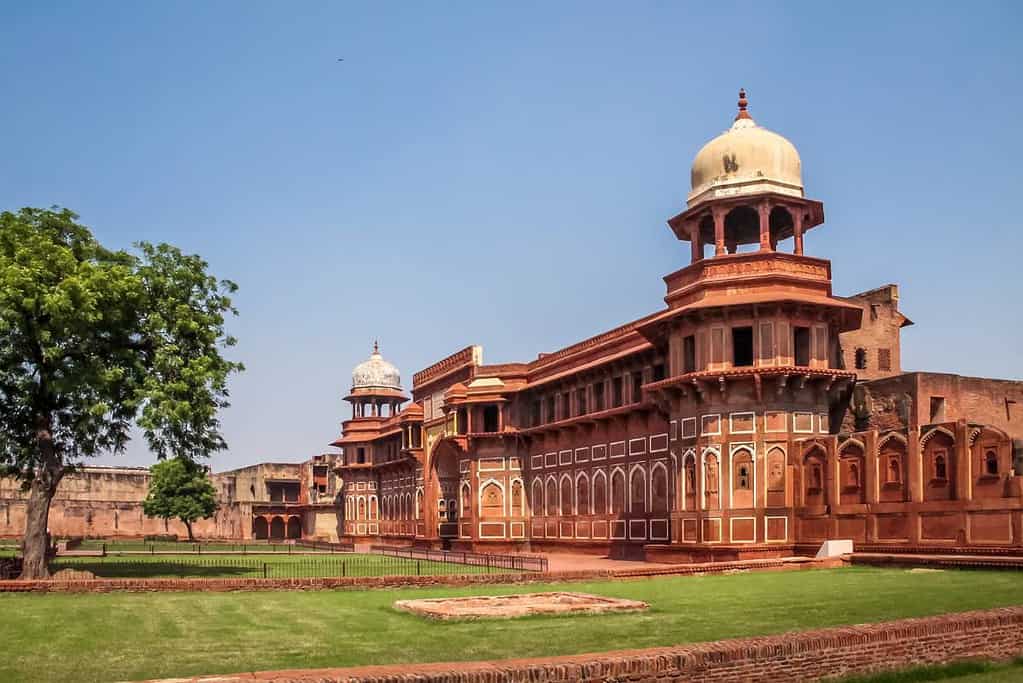
Agra Fort is a UNESCO World Heritage site located in Agra, India. The fort was built in the 16th century by the Mughal emperor Akbar and is a stunning example of Mughal architecture and design. The fort features a series of well-preserved walls and gates that once served as the primary defense for the Mughal Empire. Visitors to Agra Fort can explore several key landmarks, including the Jahangir Palace, which was built by Akbar’s son and showcases a blend of Hindu and Islamic architectural styles, and the Khas Mahal, which was the private palace of the emperor and features beautiful marble and jali work. The fort also offers stunning views of the nearby Taj Mahal, just a few kilometers away. Agra Fort is a must-visit destination for anyone interested in Indian history and architecture.
Ajanta Caves
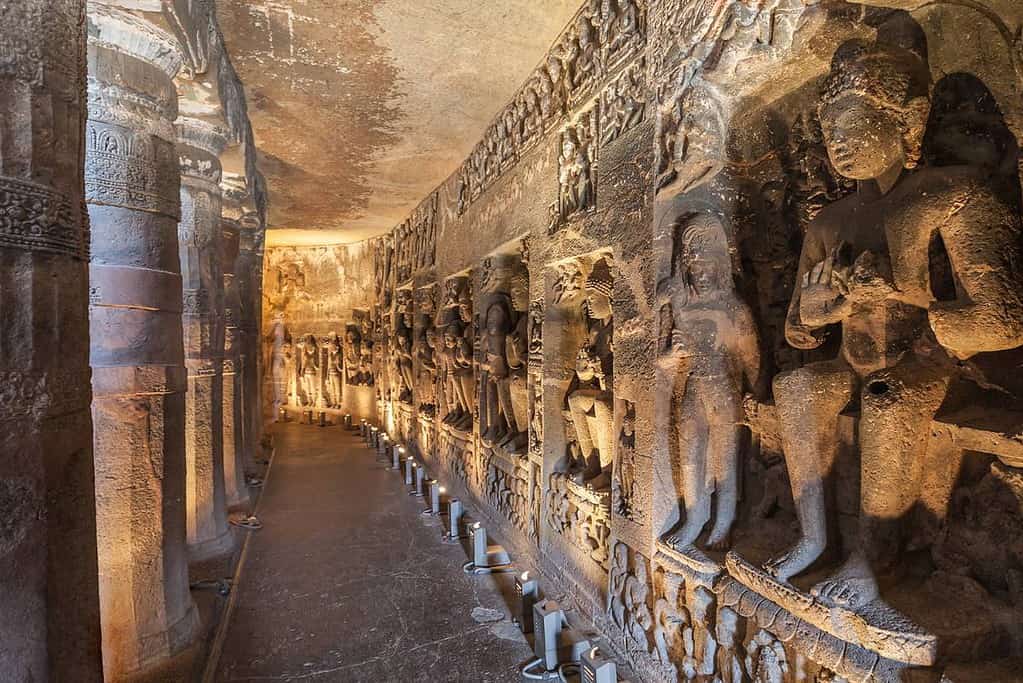
Ajanta Caves is a UNESCO World Heritage Site in the Aurangabad district of Maharashtra, India. The caves consist of 29 rock-cut Buddhist temples and monasteries that date back to the 2nd century BCE. The caves are renowned for their beautiful frescoes, sculptures, and other artworks that depict Buddhist themes and stories. Visitors can explore the intricate rock-cut architecture, which includes pillared halls, shrines, and viharas. The Ajanta Caves are a must-visit destination for anyone interested in ancient Indian art, culture, and history.
Archaeological Site of Nalanda Mahavihara at Nalanda, Bihar
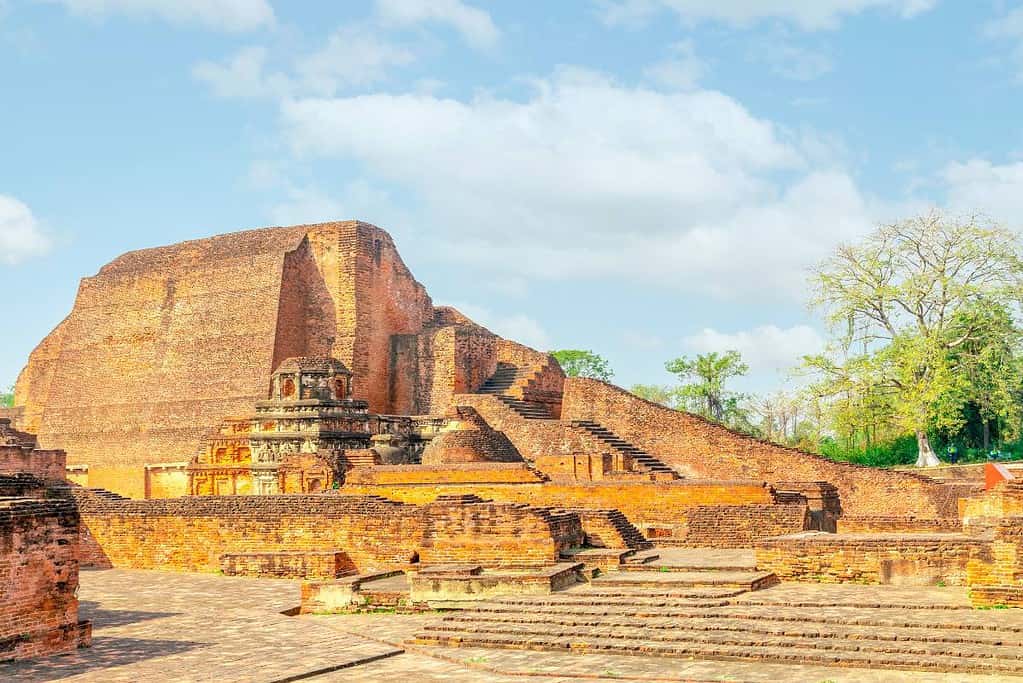
The Archaeological Site of Nalanda Mahavihara is a UNESCO World Heritage site in the Indian state of Bihar. The site contains the remains of an ancient Buddhist monastery and university established in the 5th century CE and remained a center of learning for more than 700 years. The site is home to numerous temples, shrines, stupas, and other structures that showcase ancient India’s architectural and artistic achievements. The site is also significant for its role in the development of Buddhist philosophy and literature, and it has been a pilgrimage site for Buddhists from around the world for centuries. The Archaeological Site of Nalanda Mahavihara is a must-visit destination for anyone interested in ancient Indian history and culture.
Buddhist Monuments at Sanchi
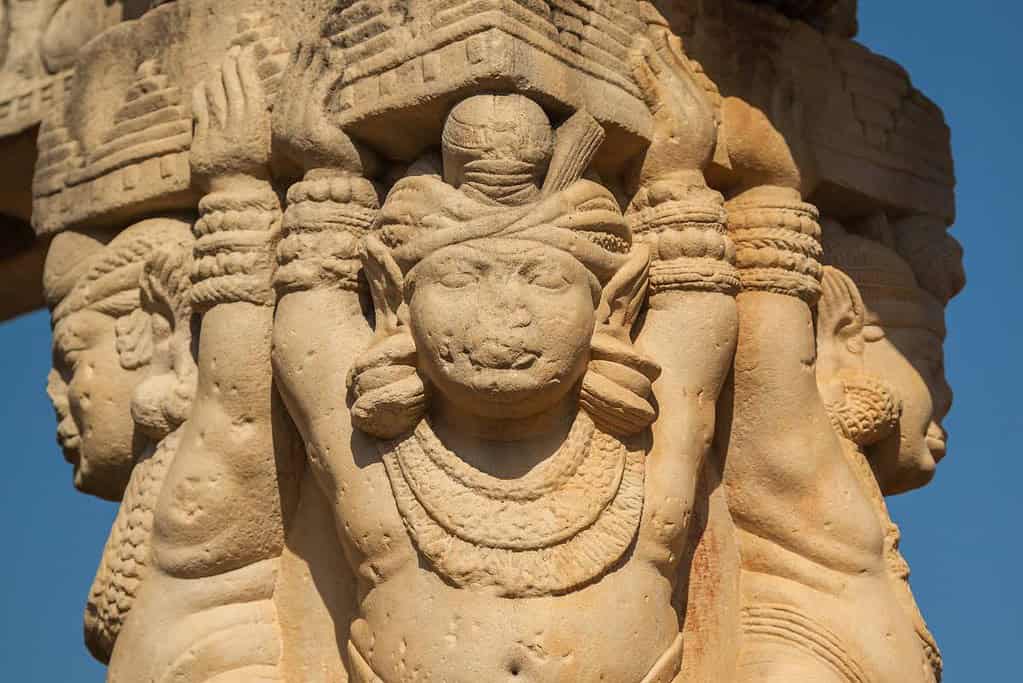
The “Buddhist Monuments at Sanchi” is a UNESCO World Heritage site located in the Indian state of Madhya Pradesh. The site includes a group of Buddhist monuments, including stupas, temples, and monasteries, built between the 3rd century BCE and the 12th century CE. The monuments at Sanchi are considered some of India’s most well-preserved and oldest Buddhist structures. The site is home to many important artifacts and relics, including the relics of the Buddha himself. The Buddhist Monuments at Sanchi is a must-visit destination for anyone interested in Buddhism or ancient architecture.
Champaner-Pavagadh Archaeological Park
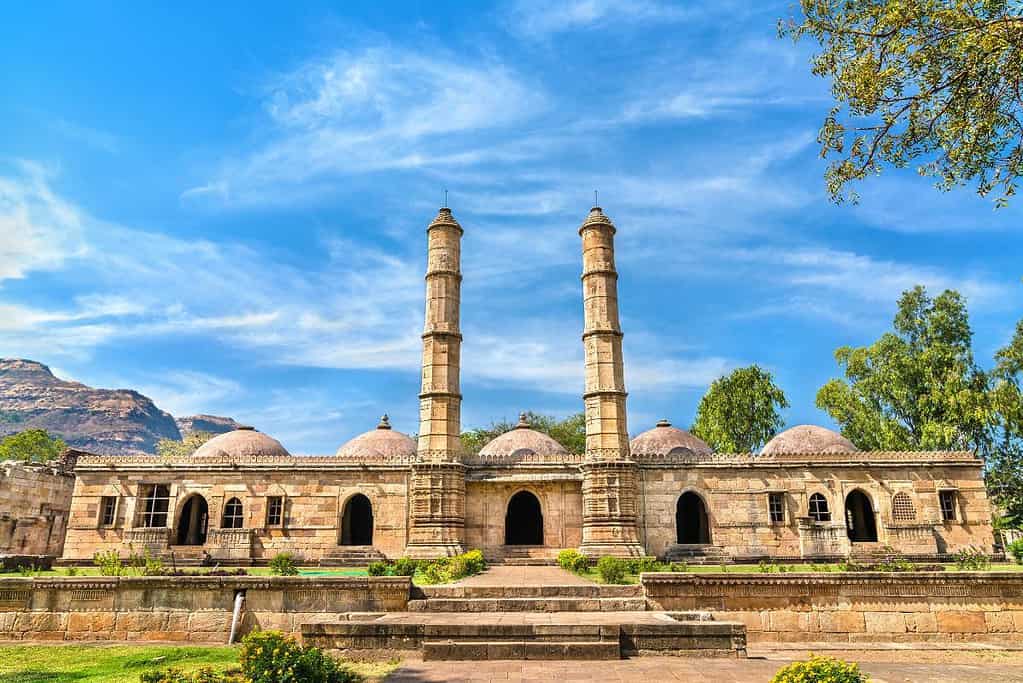
The Champaner-Pavagadh Archaeological Park is a UNESCO World Heritage Site located in the Indian state of Gujarat. The site features the ruins of an ancient fortified city from the 8th century CE. The park includes the ruins of mosques, palaces, and other structures that showcase the architectural and cultural influences of the Hindu and Islamic empires that ruled the region.
The site is home to several key landmarks. One of them is the Jami Masjid, a grand mosque considered one of India’s finest examples of Indo-Saracenic architecture. The park also includes the Kalika Mata Temple, a revered Hindu temple that dates back to the 10th century CE and is believed to be one of the oldest temples in the region.
Chhatrapati Shivaji Terminus (formerly Victoria Terminus)
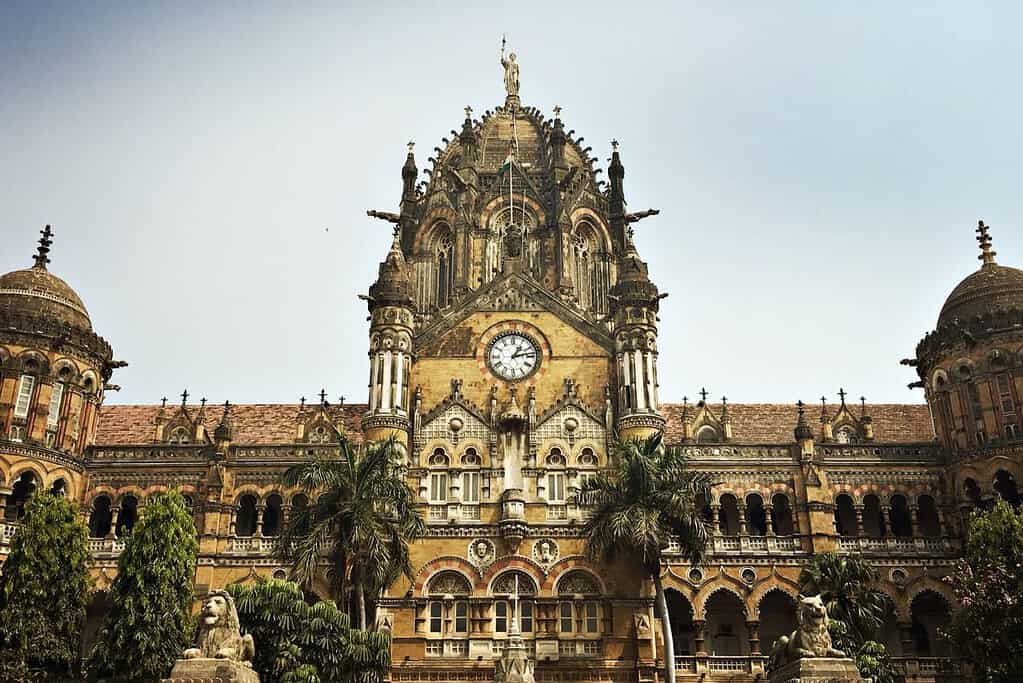
Chhatrapati Shivaji Terminus, formerly Victoria Terminus, is a UNESCO World Heritage site in Mumbai, India. The railway station was built in 1887 in the Victorian Gothic Revival style and is considered a masterpiece of 19th-century railway architecture. The station is still in use and serves as a hub for Mumbai’s suburban railway network. The building blends Victorian, Hindu, and Islamic architectural styles, including ornate carvings, stained glass windows, and a distinctive central dome. The Chhatrapati Shivaji Terminus is a significant landmark in the history of Indian architecture and transport. It is a must-visit destination for anyone interested in the city’s rich cultural heritage.
Churches and Convents of Goa
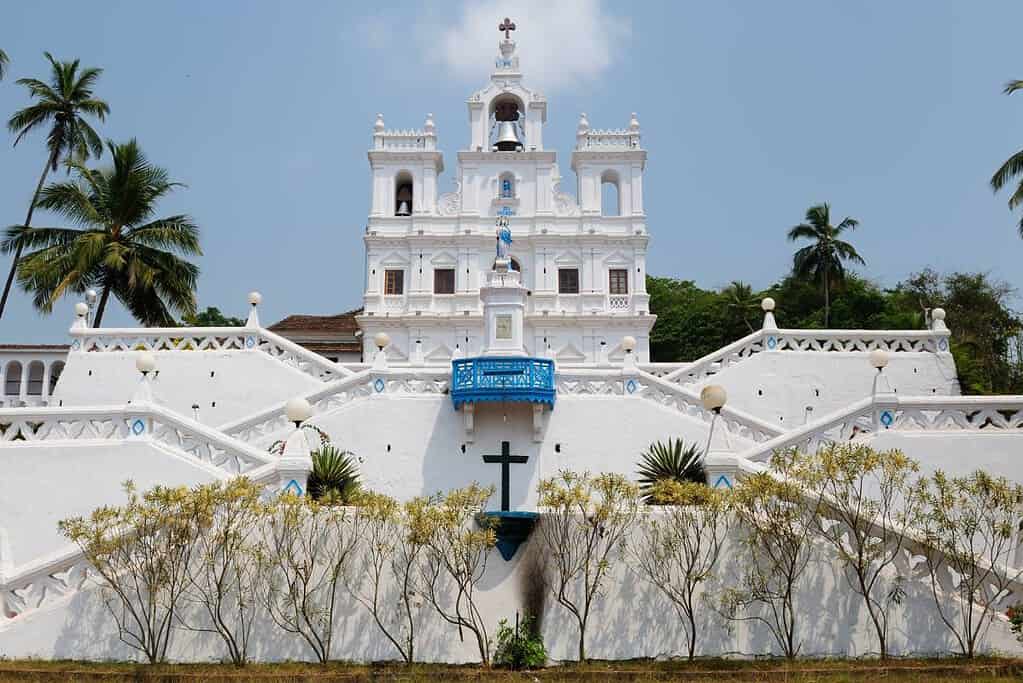
The Churches and Convents of Goa is a UNESCO World Heritage Site in Goa, India. The site features a collection of churches, convents, and other religious structures that date back to the 16th and 17th centuries when Goa was a Portuguese colony. The buildings represent a unique blend of European and Indian architectural styles and are noted for their intricate decoration and design. Key landmarks of the site include the Basilica of Bom Jesus, which houses the remains of St. Francis Xavier, and the Se Cathedral, one of the largest churches in Asia. The Churches and Convents of Goa offer a fascinating insight into the history and culture of the region. They are a must-visit destination for anyone interested in religious art and architecture.
Dholavira: a Harappan City
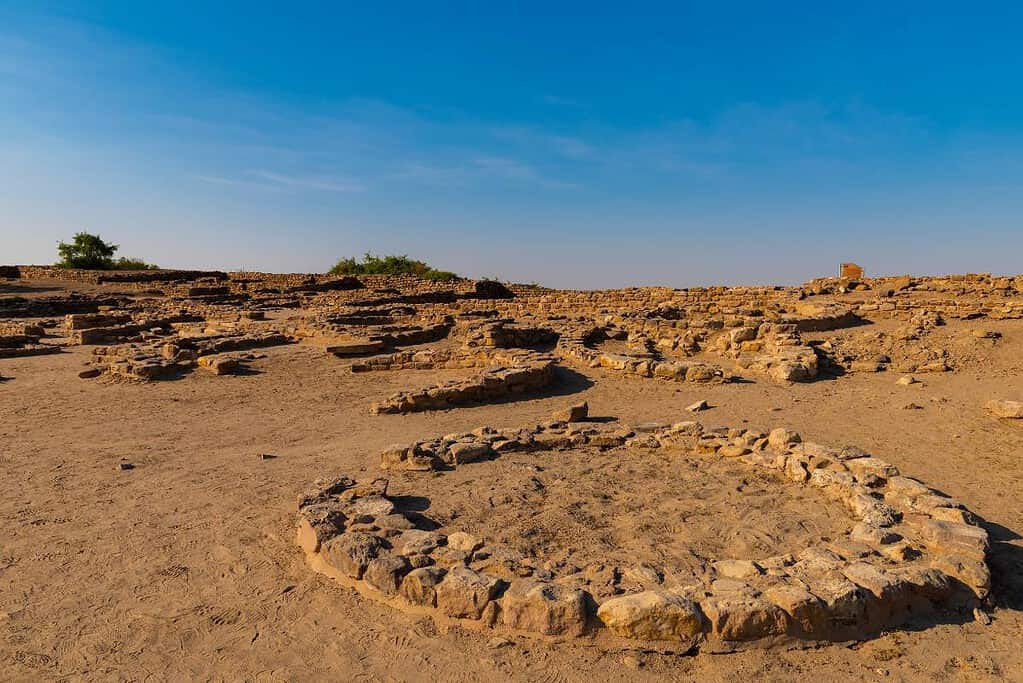
Harappan City is a UNESCO World Heritage site in the Kutch district of Gujarat, India. The site is home to the remains of an ancient Indus Valley Civilization city that flourished around 4500 years ago. The city was one of the largest and most sophisticated settlements of its time and features a unique water management system, fortified walls, and impressive public architecture. The site is home to several key landmarks, including the ceremonial ground, the bailey, the citadel, and the northern gateway. Dholavira is a fascinating destination for history and archaeology enthusiasts, offering a glimpse into India’s ancient past and the Indus Valley Civilization.
Elephanta Caves
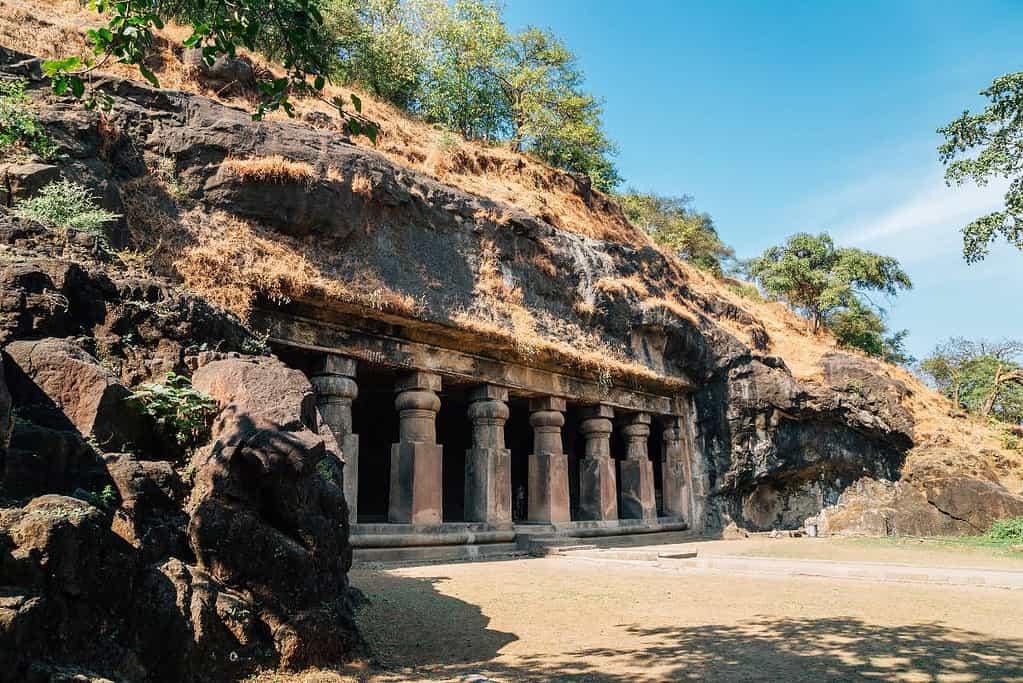
Elephanta Caves is a UNESCO World Heritage Site located on Elephanta Island, just off the coast of Mumbai, India. The caves are a collection of ancient rock-cut temples dedicated to the Hindu god Shiva, dating back to the 5th to 8th centuries. The temples are renowned for their intricate carvings, sculptures, and impressive rock-cut architecture, including the famous 20-foot-tall statue of Sadashiva, a three-headed depiction of Lord Shiva. The Elephanta Caves are a fascinating and unique destination for anyone interested in ancient Indian art and history.
Ellora Caves
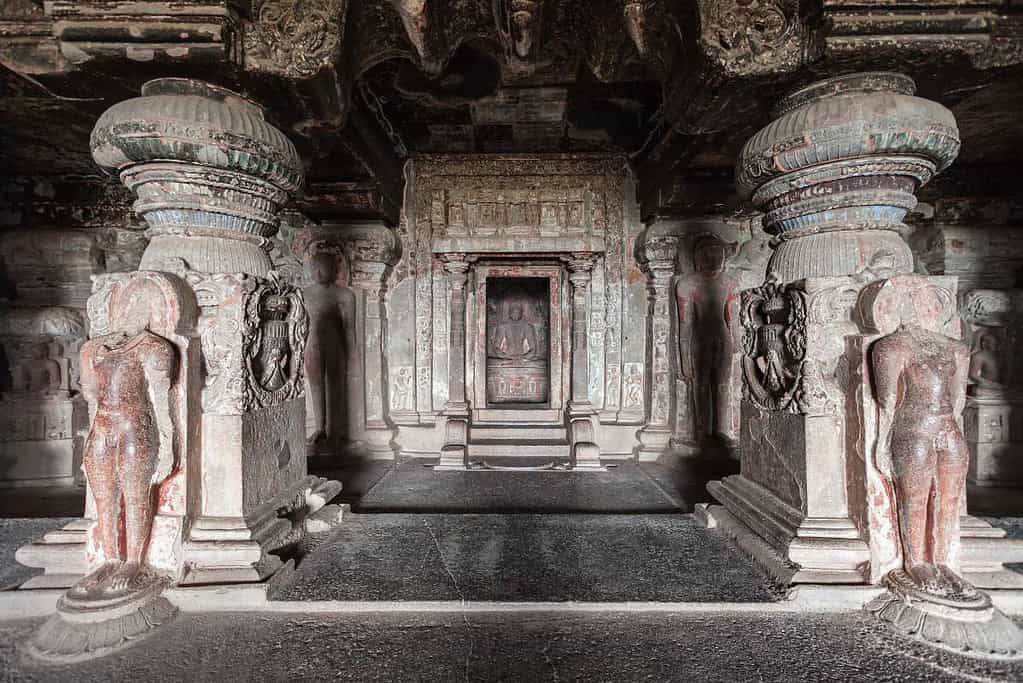
The Ellora Caves are a UNESCO World Heritage site located in the Indian state of Maharashtra. The caves are a well-preserved example of ancient Indian rock-cut architecture and showcase the religious harmony that existed in India during the 6th to 10th centuries CE. The complex comprises 34 monasteries and temples carved into the side of a basaltic cliff using only chisels and hammers. The caves contain elaborate sculptures and artwork that depict Buddhist, Hindu, and Jain religious themes. The Kailasa Temple, in particular, is a remarkable feat of engineering and is considered one of the largest monolithic structures in the world. The Ellora Caves are a must-visit destination for anyone interested in ancient Indian art, culture, and architecture.
Fatehpur Sikri
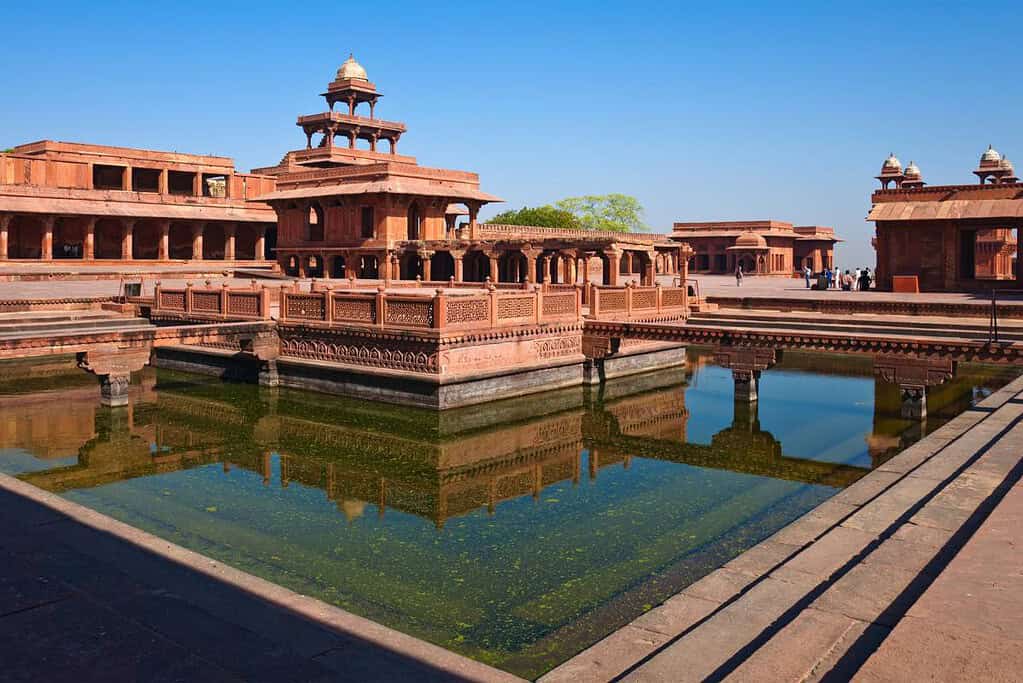
Fatehpur Sikri is a UNESCO World Heritage site in the Indian state of Uttar Pradesh. The site was built in the late 16th century by the Mughal emperor Akbar and served as the capital of the Mughal Empire for a brief period. The complex blends Islamic, Hindu, and Jain architecture and design, making it a unique cultural and artistic fusion example. Key landmarks within Fatehpur Sikri include the Buland Darwaza, a massive gateway that leads to the complex; the Diwan-i-Khas, a hall where the emperor held private audiences; and the Panch Mahal, a five-story palace that the emperor’s queens used. The complex is a must-visit destination for anyone interested in Mughal architecture and history.
Great Living Chola Temples
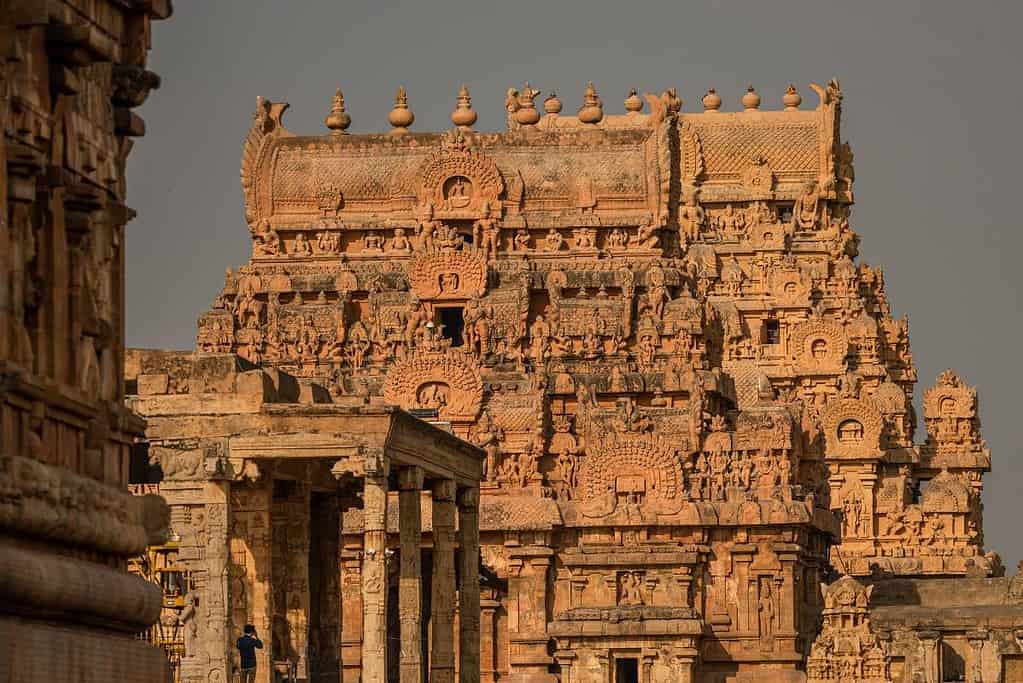
The Great Living Chola Temples are a UNESCO World Heritage Site located in the southern Indian state of Tamil Nadu. The site consists of three temples – Brihadeeswarar Temple in Thanjavur, Airavatesvara Temple in Darasuram, and the Temple of Gangaikondacholisvaram in Gangaikonda Cholapuram. These temples were built during the Chola dynasty in the 11th and 12th centuries and are remarkable examples of Dravidian architecture.
The temples are adorned with intricate carvings and sculptures that showcase the craftsmanship and creativity of the Chola artisans. The Brihadeeswarar Temple is particularly noteworthy for its towering vimana, or tower, which stands 216 feet tall and is one of the tallest in the world. The Great Living Chola Temples are a testament to the cultural and artistic achievements of the Chola dynasty and are an important part of India’s rich history and heritage.
Group of Monuments at Hampi
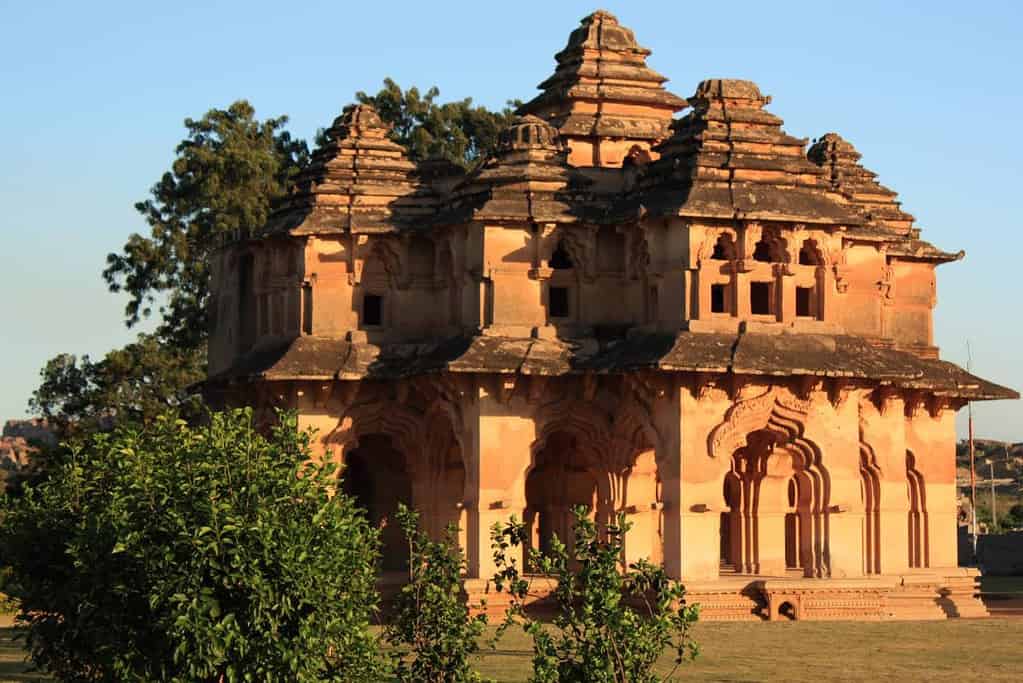
The Group of Monuments at Hampi is a UNESCO World Heritage site located in the Indian state of Karnataka. It comprises the ruins of the ancient city of Vijayanagara, once one of India’s wealthiest and most influential cities. The site is home to several well-preserved temples, palaces, and other structures that showcase the architectural and artistic achievements of the Vijayanagara Empire. The monuments include the Virupaksha Temple, the Vittala Temple Complex, and the Hazara Rama Temple, among others. The Group of Monuments at Hampi is a must-visit destination for anyone interested in Indian history, architecture, and culture.
Group of Monuments at Mahabalipuram
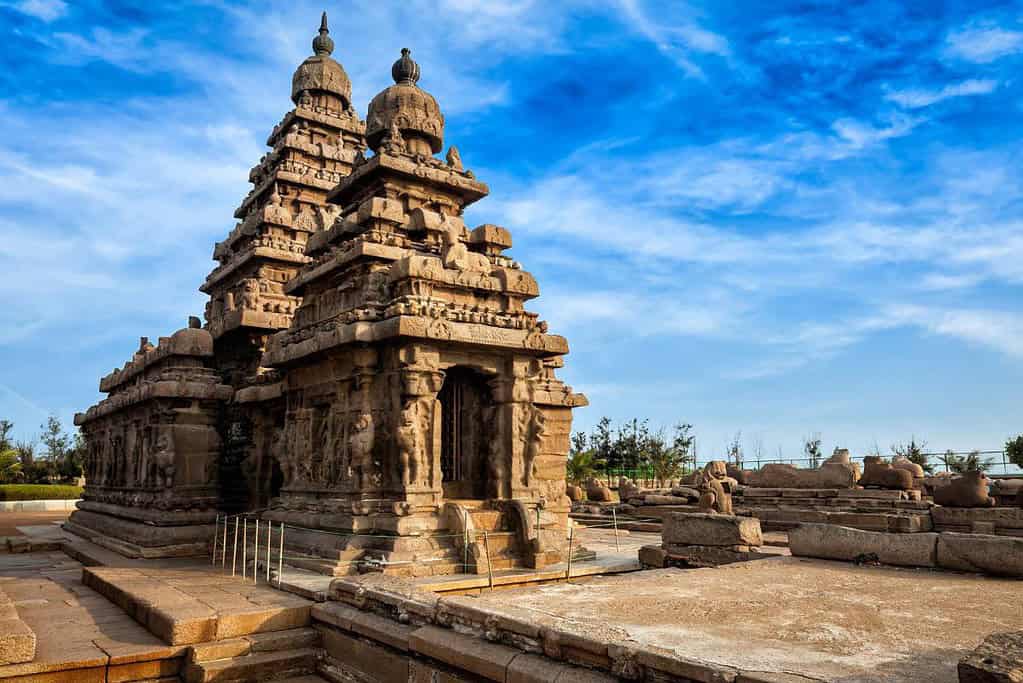
The Group of Monuments at Mahabalipuram is a UNESCO World Heritage Site in Tamil Nadu in southern India. The site features a collection of ancient stone temples and rock carvings that date back to the 7th and 8th centuries. The monuments were built during the reign of the Pallava dynasty and showcase the region’s unique architectural and artistic styles during that time.
The most iconic structures at the site include the Shore Temple, a stunning temple complex built on the shore of the Bay of Bengal, and the Pancha Rathas, a set of five monolithic rock temples each carved from a single piece of stone. The Group of Monuments at Mahabalipuram is a must-visit destination for anyone interested in ancient Indian history and architecture.
Group of Monuments at Pattadakal
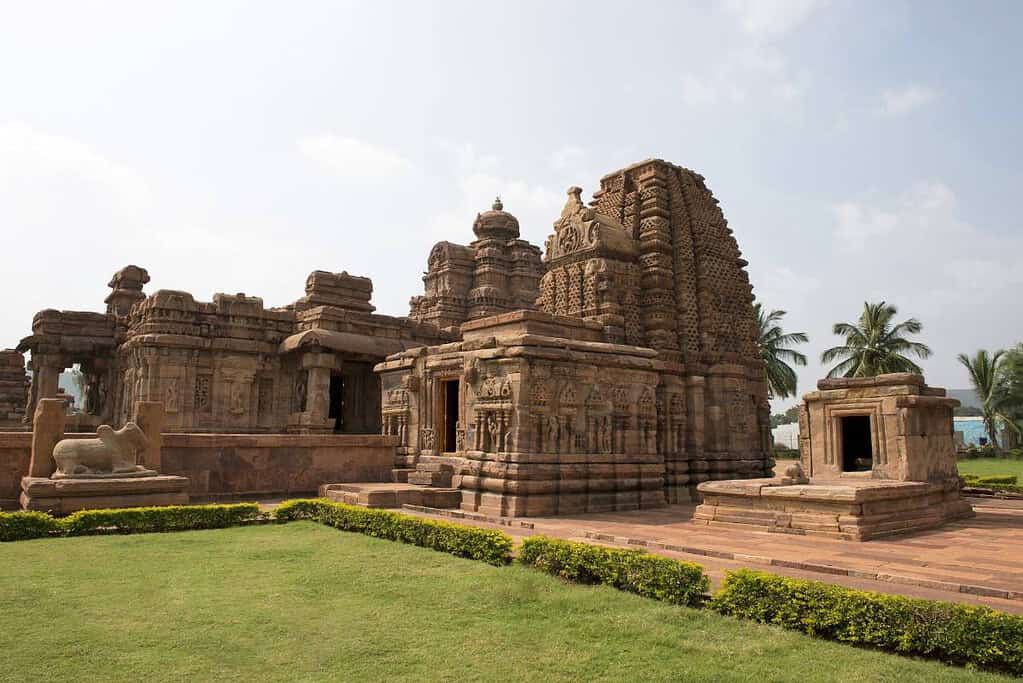
The Group of Monuments at Pattadakal is a UNESCO World Heritage site in Karnataka in southern India. It is a complex of ten major temples and numerous small shrines and monuments built during the 7th and 8th centuries CE. These temples showcase the blending of Indian architectural styles with influences from northern and southern India and the Chalukya dynasty that ruled the region during that time. The complex includes some of India’s most impressive examples of Hindu and Jain temples, each with its unique style and intricate carvings. The Group of Monuments at Pattadakal is a must-visit destination for anyone interested in Indian architecture and history.
Hill Forts of Rajasthan
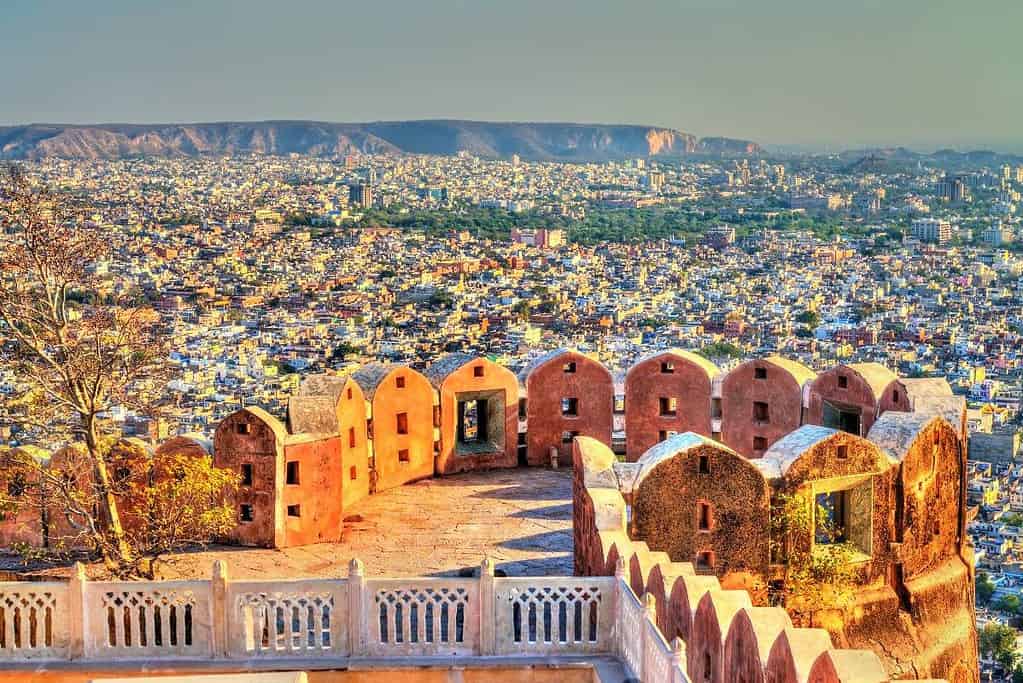
The Hill Forts of Rajasthan is a UNESCO World Heritage Site in the northern Indian state of Rajasthan. The site includes six majestic forts built during the medieval period and served as strategic defensive structures. The forts are situated on hilltops and provide stunning views of the surrounding landscape. Each fort has unique architecture and history, representing the military prowess and artistic achievements of the Rajput kingdoms that ruled the region. The Hill Forts of Rajasthan is a must-visit destination for anyone interested in Indian history, architecture, and culture.
Historic City of Ahmadabad
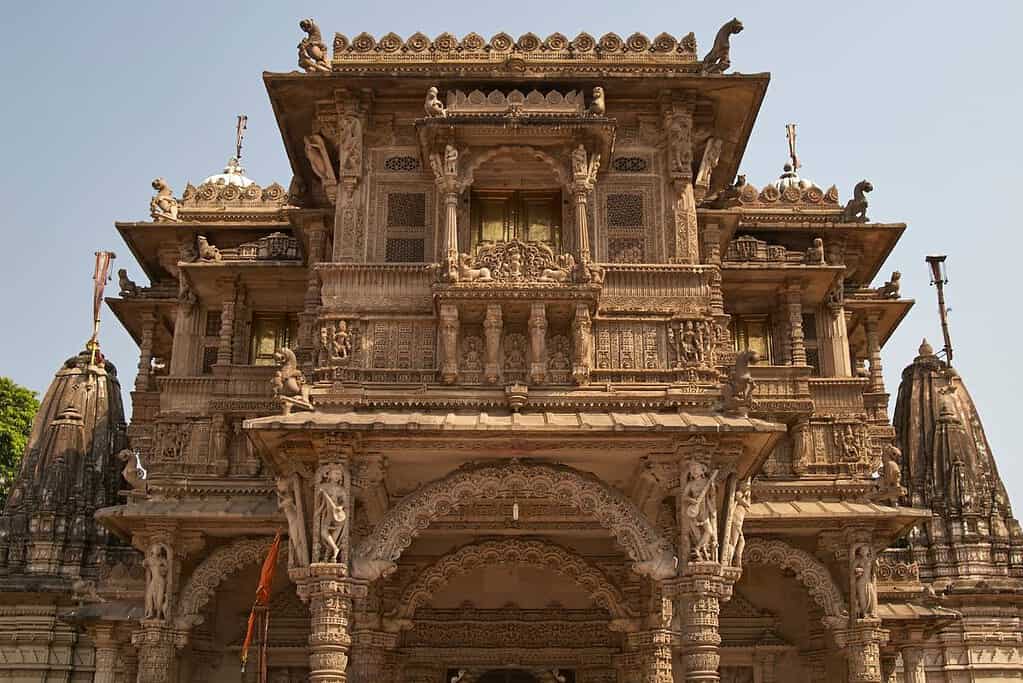
The Historic City of Ahmadabad is a UNESCO World Heritage Site located in the city of Ahmadabad in the western Indian state of Gujarat. The city is known for its rich cultural heritage and well-preserved historic buildings and monuments. Sultan Ahmad Shah founded The city in the 15th century and was an important trading center for textiles and spices during the Mughal era.
The historic city of Ahmadabad is home to several iconic landmarks, including the Jami Masjid, a grand mosque built in the Indo-Islamic architectural style, and the Bhadra Fort, an ancient fort built in the 14th century. The city is also home to numerous well-preserved step-wells, including the Adalaj Stepwell and the Dada Harir Stepwell, which served as water sources and community gathering places.
Humayun’s Tomb, Delhi
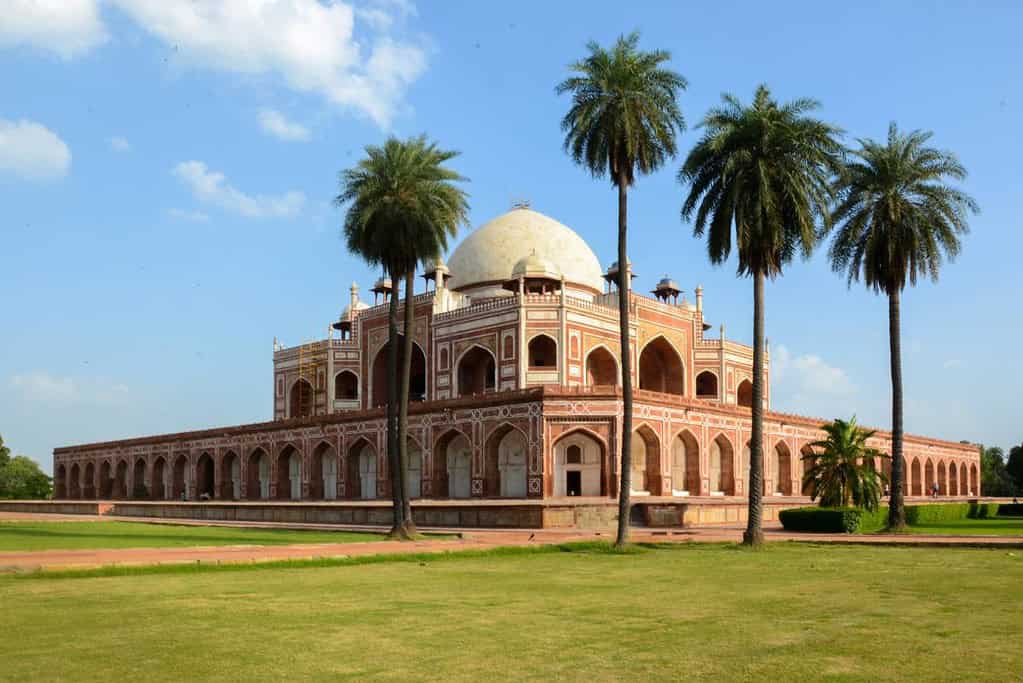
Humayun’s Tomb is a UNESCO World Heritage site located in Delhi, India. The tomb is an excellent example of Mughal architecture and was built in the 16th century as a final resting place for Emperor Humayun. The tomb is surrounded by beautiful gardens and water channels and is considered one of the most significant examples of Persian-inspired Mughal architecture. The intricate designs and craftsmanship on the tomb’s exterior and interior, including its decorative tiles and sandstone screens, are particularly noteworthy. Visitors to Humayun’s Tomb can explore the site’s many features, including its various tombs, water channels, and gardens, and learn about the fascinating history of the Mughal Empire.
Jaipur City, Rajasthan

This UNESCO World Heritage site is located in Jaipur, Rajasthan in India, and is known as the “Pink City” due to its distinctive pink-hued buildings. The site includes several architectural landmarks, including the City Palace, which served as the residence of the Maharaja of Jaipur, and the Jantar Mantar observatory, which features a collection of astronomical instruments from the 18th century. The site also includes several impressive forts, including Amber Fort and Jaigarh Fort, built in the 16th century and featuring stunning Rajput architecture and design. Jaipur City is a must-visit destination for anyone interested in India’s history, culture, and architecture.
Kakatiya Rudreshwara (Ramappa) Temple, Telangana
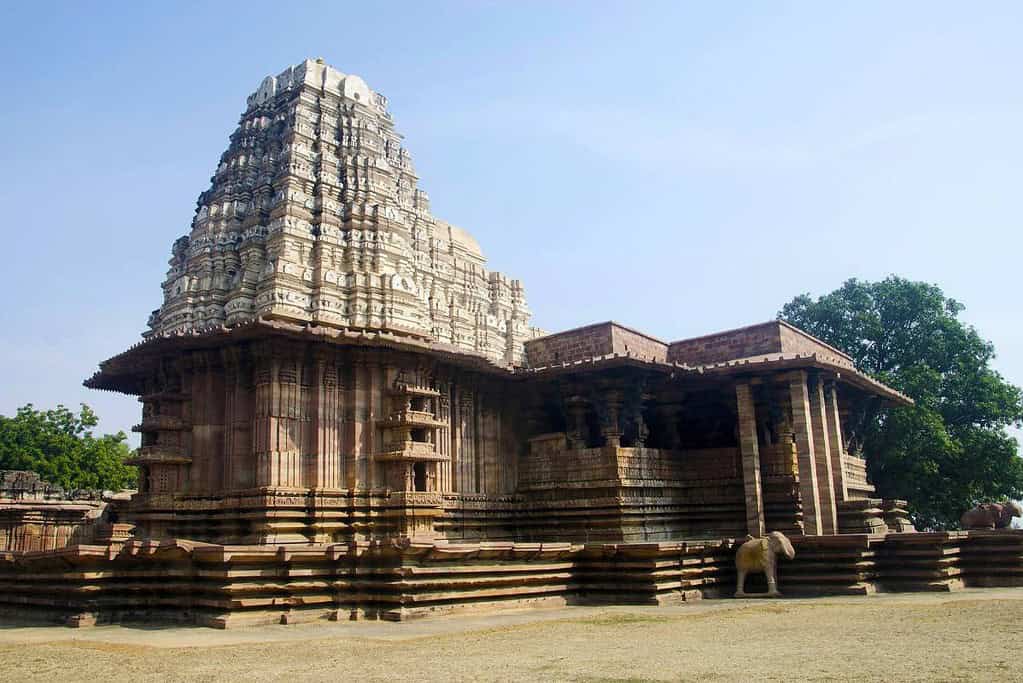
The Kakatiya Rudreshwara (Ramappa) Temple is a UNESCO World Heritage Site in Telangana, India. The temple is a fine example of the Kakatiya dynasty’s architectural and artistic achievements during the 12th and 13th centuries. The temple’s main structure is made of lightweight bricks, and the intricate carvings and sculptures showcase the mastery of the Kakatiya sculptors. The temple is dedicated to Lord Shiva and is known for its unique floating bricks that allow it to withstand earthquakes. The Kakatiya Rudreshwara (Ramappa) Temple is a must-visit destination for anyone interested in ancient Indian architecture and history.
Khajuraho Group of Monuments
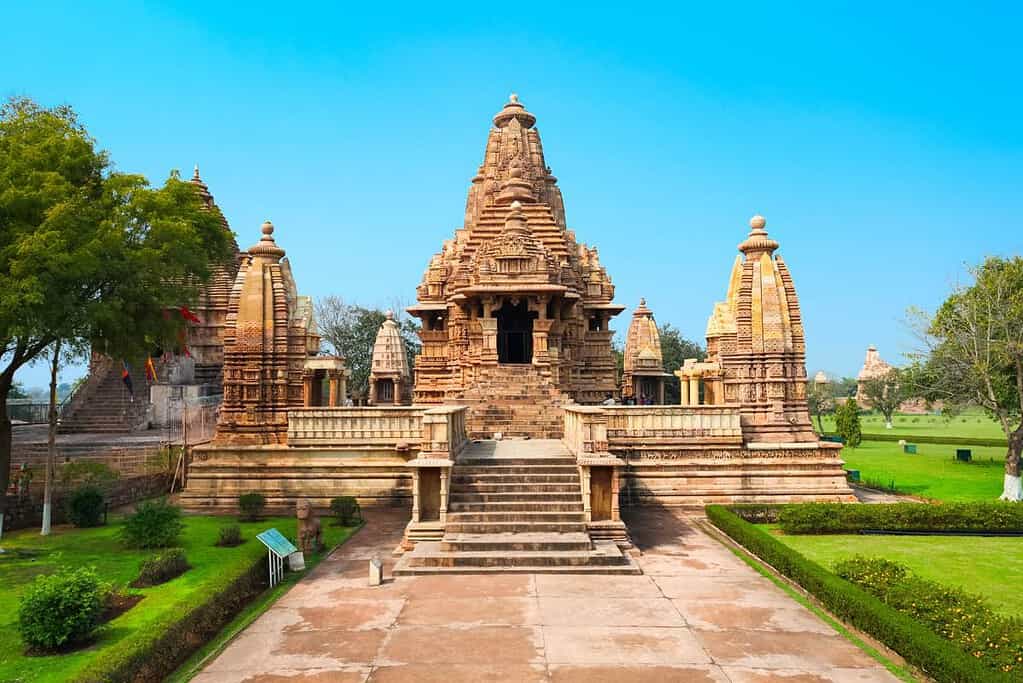
The Khajuraho Group of Monuments is a UNESCO World Heritage Site located in the Indian state of Madhya Pradesh. The site features a collection of Hindu and Jain’s temples built between the 10th and 12th centuries, known for their intricate and elaborate sculptures and carvings depicting various deities, mythological scenes, and daily life during that period. The temples are renowned for their architectural beauty and the fine craftsmanship of their sculptures. The site attracts visitors from all over the world who come to marvel at the intricate carvings and sculptures that showcase the rich cultural heritage of India.
Mahabodhi Temple Complex at Bodh Gaya
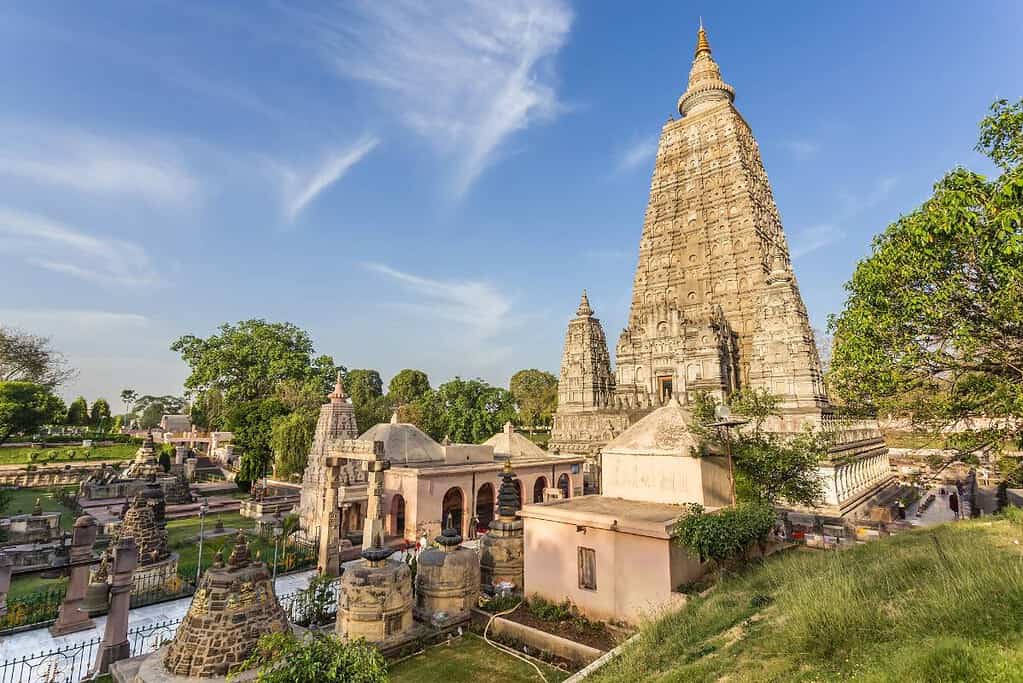
The Mahabodhi Temple Complex at Bodh Gaya is a UNESCO World Heritage Site in Bihar, India. The complex is considered one of the most important Buddhist pilgrimage sites in the world, as it is believed to be where Gautama Buddha attained enlightenment under a Bodhi tree. The complex includes the Mahabodhi Temple, a UNESCO World Heritage Site, and several other important Buddhist structures and monuments. The temple is a masterpiece of Indian brickwork and showcases the architectural and artistic achievements of ancient Indian civilization. The Mahabodhi Temple Complex at Bodh Gaya is a must-visit destination for anyone interested in Buddhist history, art, and culture.
Mountain Railways of India
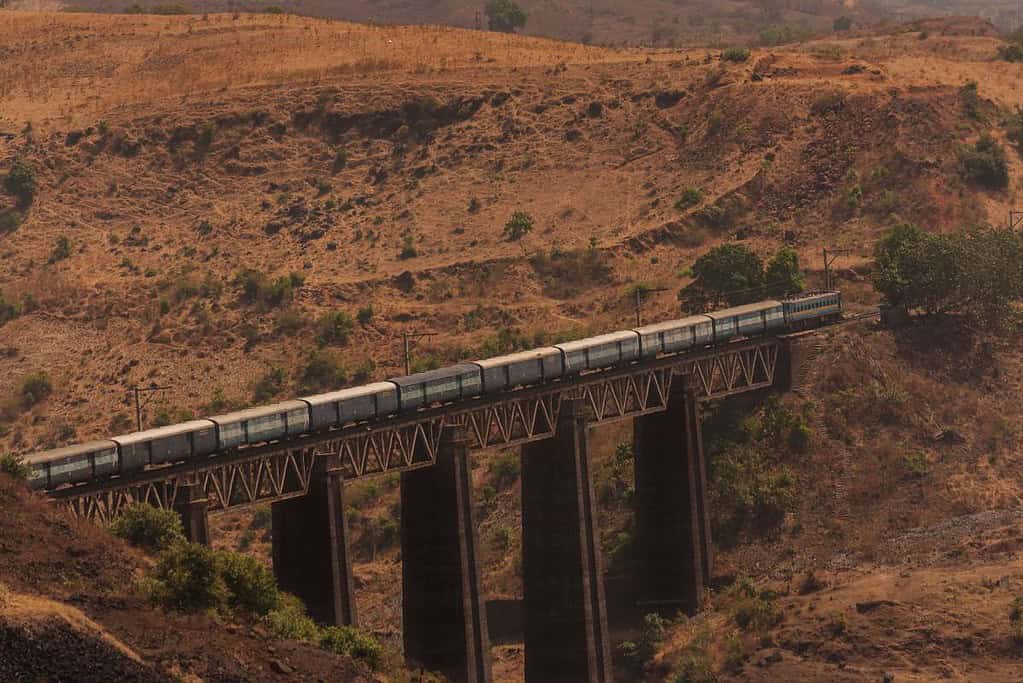
The Mountain Railways of India is a UNESCO World Heritage Site in India. The site features three historic railway lines built in the 19th and early 20th centuries to connect the hill stations in the Himalayas with the rest of India. The railway lines, which include the Darjeeling Himalayan Railway, the Nilgiri Mountain Railway, and the Kalka-Shimla Railway, are engineering marvels and offer breathtaking views of the Himalayan mountains and the surrounding landscape. The Mountain Railways of India are significant for their role in India’s transportation history and for their cultural and social importance in connecting the people and communities of the Himalayan region to the rest of India.
Qutb Minar and its Monuments, Delhi
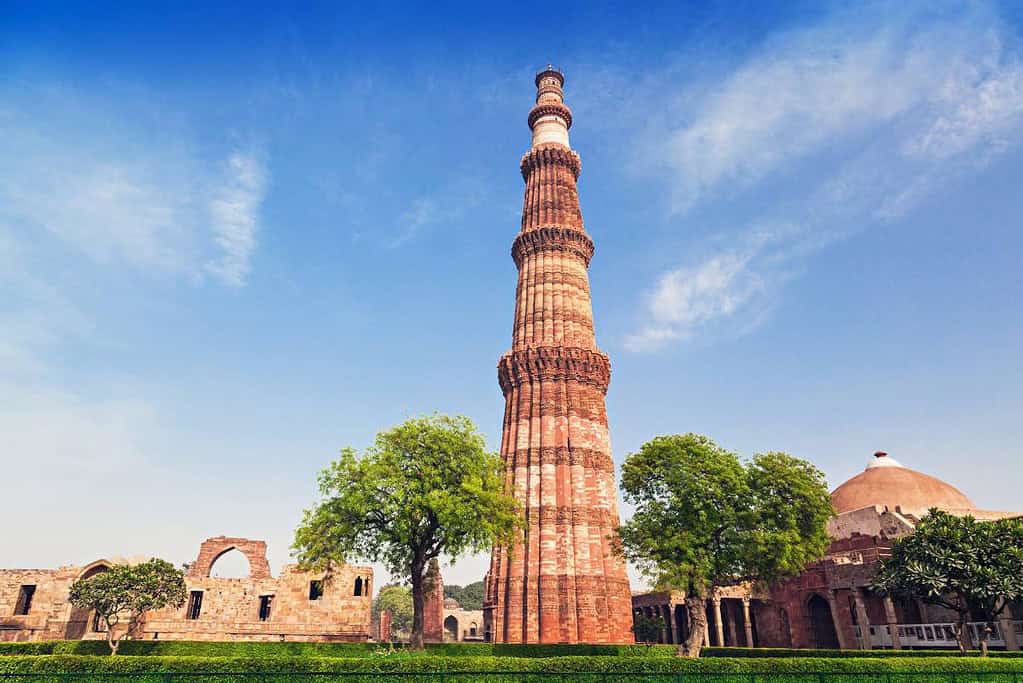
Qutb Minar and its Monuments is a UNESCO World Heritage Site in Delhi, India. The site features several well-preserved medieval-era structures, including the Qutb Minar Tower, which stands over 70 meters tall and is one of the tallest brick minarets in the world. The site also includes several other notable structures, such as the Alai Darwaza gate, the Quwwat-ul-Islam mosque, and the iron pillar of Delhi. These structures represent a blend of different architectural styles and cultural influences, reflecting the diverse history and heritage of the Delhi region. Qutb Minar and its Monuments are a must-visit destination for anyone interested in history, architecture, and culture.
Rani-ki-Vav (the Queen’s Stepwell) at Patan, Gujarat
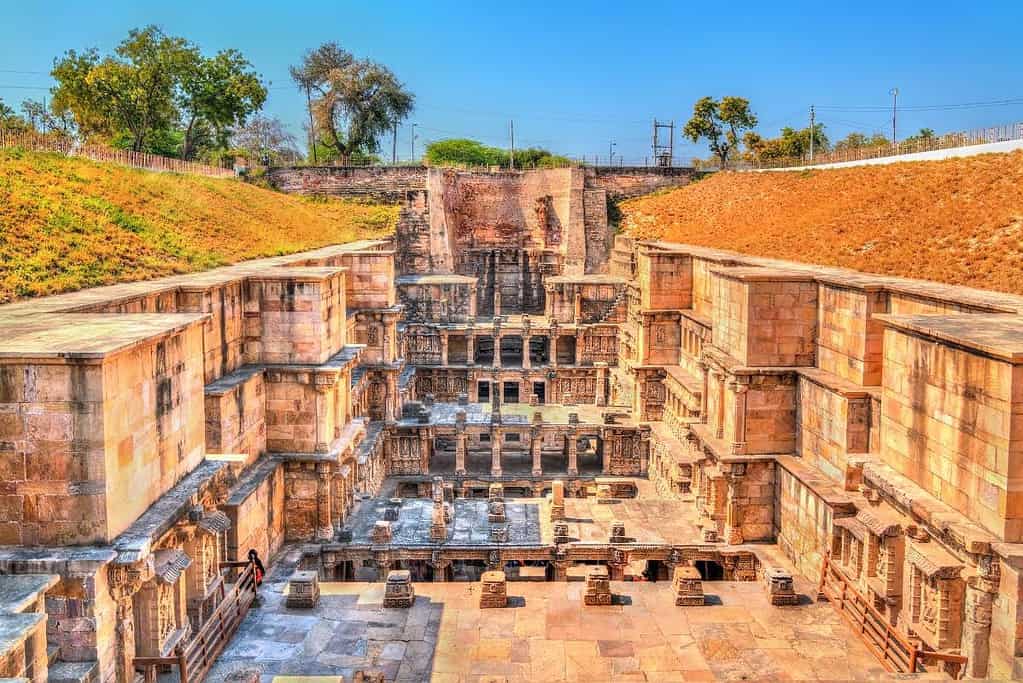
Rani-ki-Vav, the Queen’s Stepwell, is a UNESCO World Heritage Site in Patan, Gujarat, India. It was built in the 11th century and is a masterpiece of Indian subterranean architecture. The stepwell was built as a memorial to a king by his widowed queen and is renowned for its intricate carvings and sculptures that depict Hindu mythology and legends. The stepwell is seven levels deep and was designed as a way to access the water table during times of drought. The site is an exceptional example of Indian hydraulic engineering and is a must-visit destination for anyone interested in ancient Indian architecture and culture.
Red Fort Complex
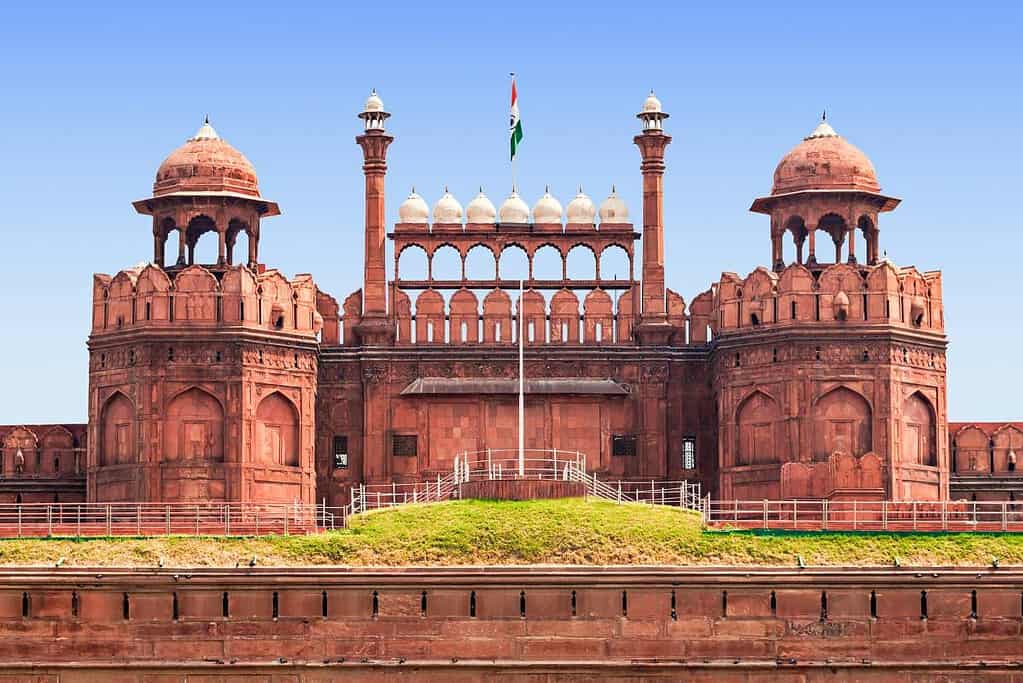
The Red Fort Complex is a UNESCO World Heritage Site in the historic city of Old Delhi, India. The complex features well-preserved sandstone walls constructed during the Mughal Empire in the 17th century. The walls enclose several key landmarks, including the Diwan-i-Aam (Hall of Public Audience), Diwan-i-Khas (Hall of Private Audience), and the stunning Moti Masjid (Pearl Mosque). The Red Fort Complex also houses several museums and art galleries that showcase India’s rich cultural heritage. This historic site is a must-visit destination for anyone interested in Mughal architecture and Indian history.
Rock Shelters of Bhimbetka
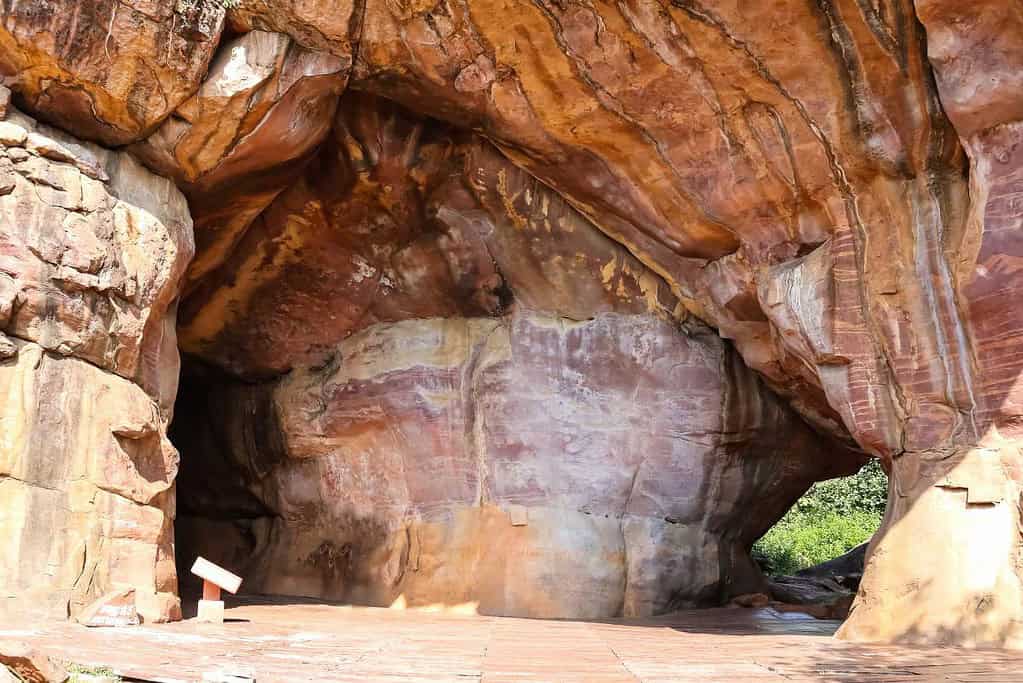
The Rock Shelters of Bhimbetka is a UNESCO World Heritage Site located in the Indian state of Madhya Pradesh. The site comprises a group of rock shelters and caves displaying evidence of human habitation and rock art dating back to prehistoric times. The shelters feature paintings and engravings that depict hunting scenes, dancing, music, and religious rituals. The site is considered a vital discovery in the study of human evolution and provides valuable insights into the cultural traditions of India’s earliest inhabitants. The Rock Shelters of Bhimbetka is a must-visit destination for anyone interested in anthropology, archaeology, and history.
Sun Temple, Konârak
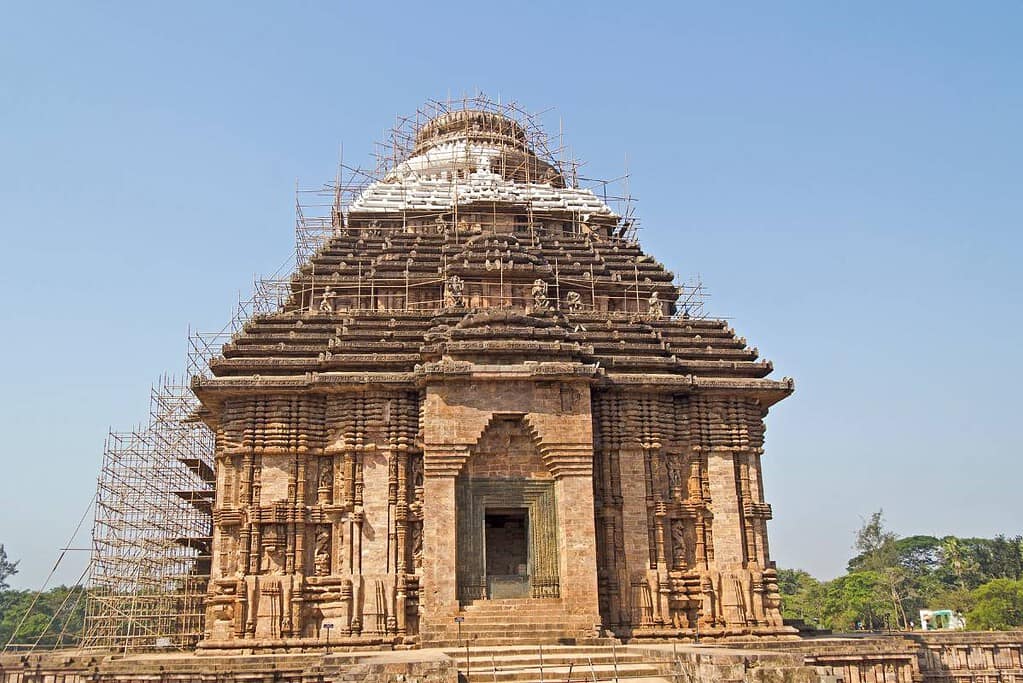
The Sun Temple, Konark is a UNESCO World Heritage site located in India’s eastern state of Odisha. The temple is a well-preserved example of ancient Hindu architecture and was built in the 13th century to honor the sun god Surya. The temple is designed as a giant chariot with 12 pairs of carved wheels and is covered in intricate carvings and sculptures depicting scenes from Hindu mythology. The temple also features various architectural marvels, such as a tower that once stood 70 meters tall and an astronomical observatory. The Sun Temple, Konark is considered one of the most impressive examples of ancient Hindu temple architecture and is a must-visit destination for anyone interested in ancient Indian culture and history.
Taj Mahal
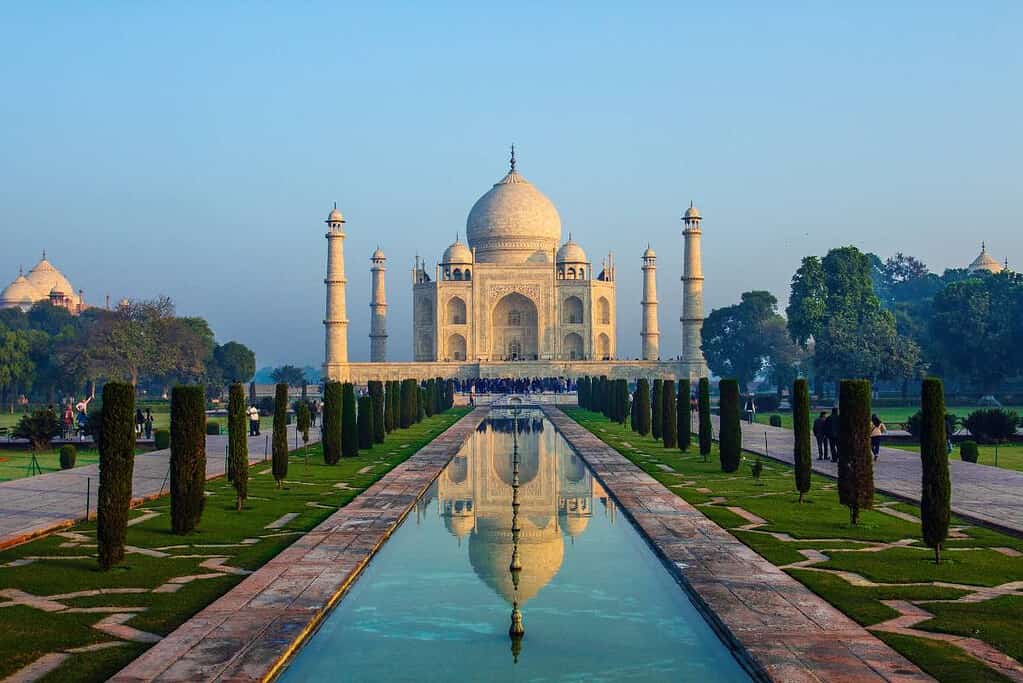
The Taj Mahal is a UNESCO World Heritage site located in the city of Agra, India. It is one of the world’s most iconic and beautiful structures and is considered a masterpiece of Mughal architecture. The Taj Mahal was built by the Mughal emperor Shah Jahan in memory of his beloved wife, Mumtaz Mahal. The monument is made of white marble and is adorned with intricate carvings and inlaid precious stones. The Taj Mahal is surrounded by lush gardens and a reflecting pool, adding to its beauty and serenity. The Taj Mahal is an architectural and cultural wonder that attracts millions of visitors annually and is a must-see destination for anyone visiting India.
The Architectural Work of Le Corbusier, an Outstanding Contribution to the Modern Movement
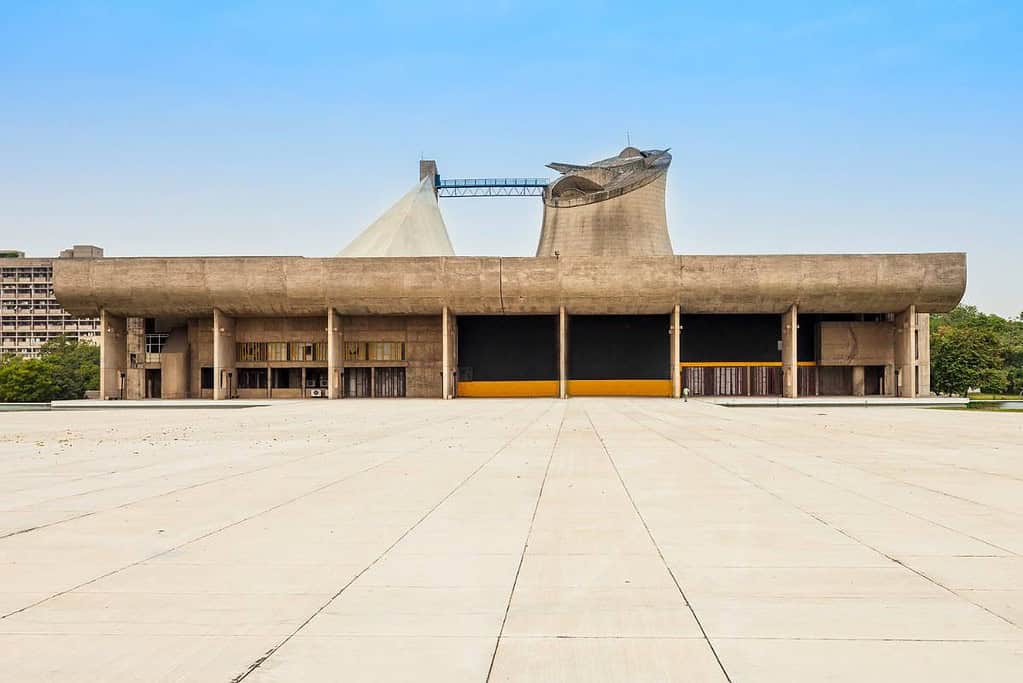
The Taj Mahal is a UNESCO World Heritage site located in the city of Agra, India. It is a stunning example of Mughal architecture, blending Indian, Persian, and Islamic styles. Mughal Emperor Shah Jahan built the Taj Mahal in memory of his beloved wife Mumtaz Mahal, considered one of the greatest architectural achievements in the world. The structure features intricate designs and decorative elements, including marble inlay work, calligraphy, and geometric patterns. Beautiful gardens and water features surround the Taj Mahal and is widely regarded as one of the most beautiful buildings in the world.
The Jantar Mantar, Jaipur
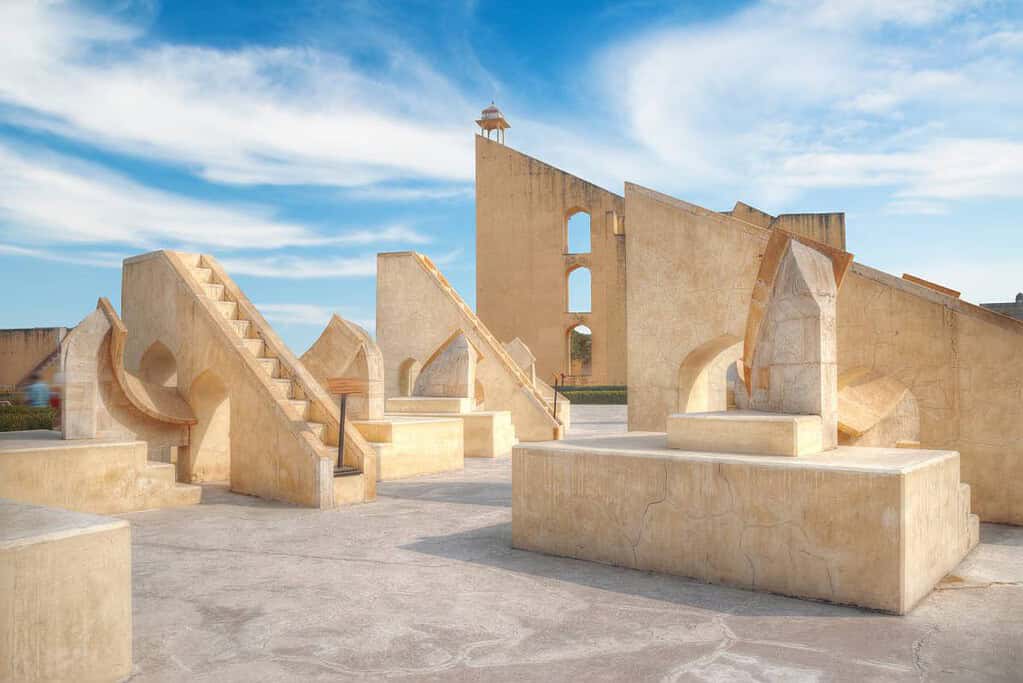
The Jantar Mantar, Jaipur is a UNESCO World Heritage Site located in Jaipur in Rajasthan, India. It is a collection of 19 architectural astronomical instruments built by the Rajput king Sawai Jai Singh II in the early 18th century. The instruments, which include the world’s largest sundial, were used to measure time, predict eclipses, and track stars and planets. The Jantar Mantar is a testament to India’s scientific and technological achievements during the medieval period, and it continues to be an important site for astronomy and scientific research today. The Jantar Mantar, Jaipur is a must-visit destination for anyone interested in astronomy, history, or architecture.
Victorian Gothic and Art Deco Ensembles of Mumbai
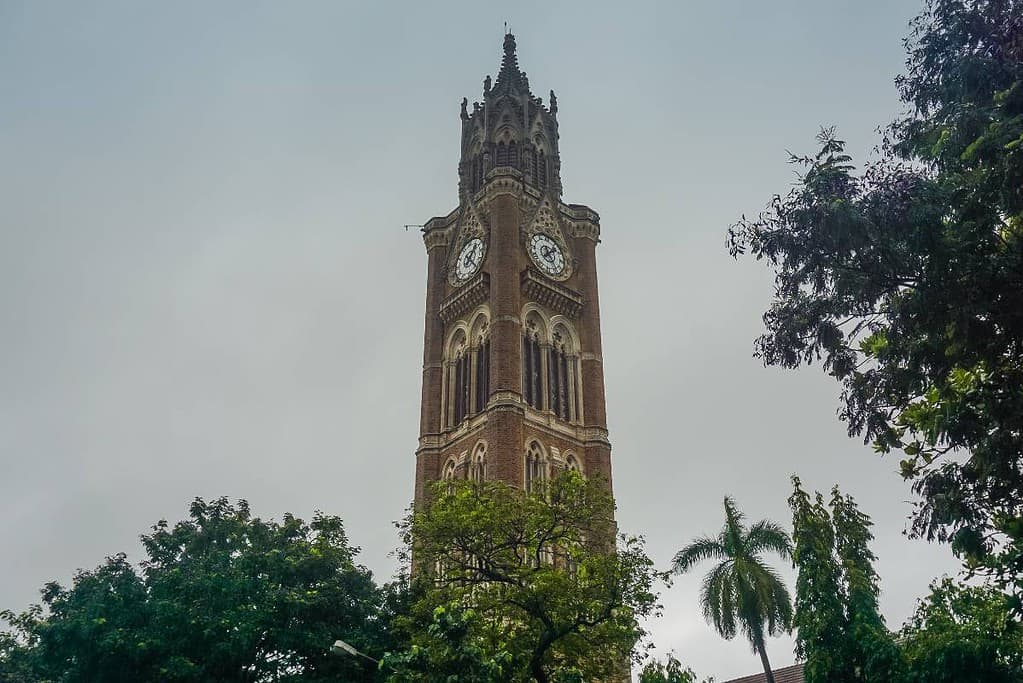
The Victorian Gothic and Art Deco Ensembles of Mumbai is a UNESCO World Heritage Site located in the bustling city of Mumbai, India. The site showcases the unique blend of Victorian and Art Deco styles that developed in the city during the late 19th and early 20th centuries. The ensemble includes iconic buildings such as the Chhatrapati Shivaji Terminus (formerly known as Victoria Terminus), the Bombay High Court, and the University of Mumbai. These buildings were constructed during a period of great prosperity in Mumbai, and they reflect the city’s dynamic and cosmopolitan character. The Victorian Gothic and Art Deco Ensembles of Mumbai are a must-visit destination for anyone interested in architecture and the history of Mumbai.
Great Himalayan National Park Conservation Area
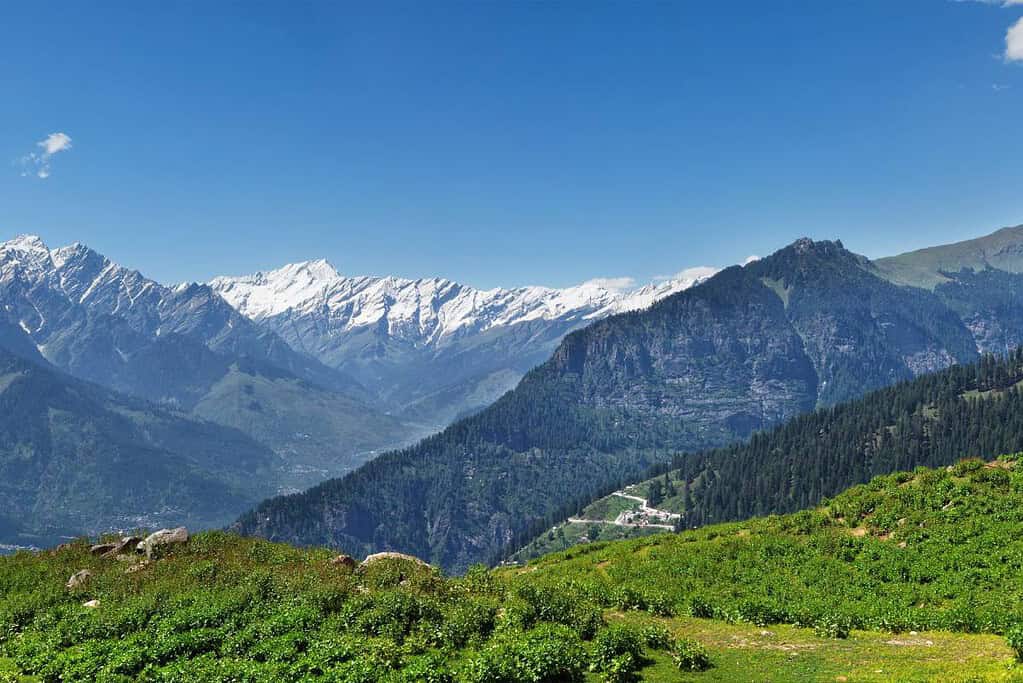
The Great Himalayan National Park Conservation Area is a UNESCO World Heritage site in the Indian state of Himachal Pradesh. The park is a unique ecosystem home to many flora and fauna, including several endangered species. The park covers an area of 905 square kilometers and includes high-altitude lakes, glaciers, and forests. Visitors can explore the park on various hiking trails and enjoy stunning views of the Himalayan mountains. The park is also home to several traditional villages and communities that have lived harmoniously with nature for generations, making it a fascinating cultural and ecological destination.
Kaziranga National Park
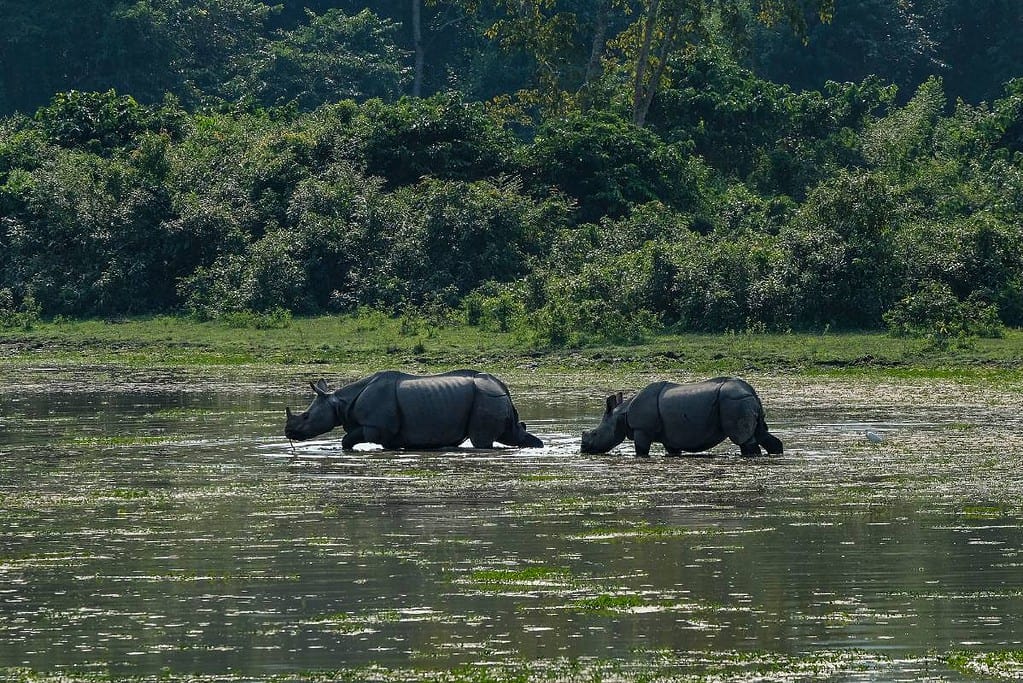
Kaziranga National Park is a UNESCO World Heritage site located in the Indian state of Assam. It is renowned for its exceptional biodiversity, which includes the largest population of the endangered one-horned rhinoceros in the world. The park is also home to other rare and threatened species such as tigers, elephants, water buffalo, and a variety of bird species.
Kaziranga National Park is located in the floodplains of the Brahmaputra River and is characterized by tall elephant grass, swampy lagoons, and dense forests. Visitors can explore the park on elephant-back or by jeep and can enjoy birdwatching, nature walks, and safaris.
Keoladeo National Park
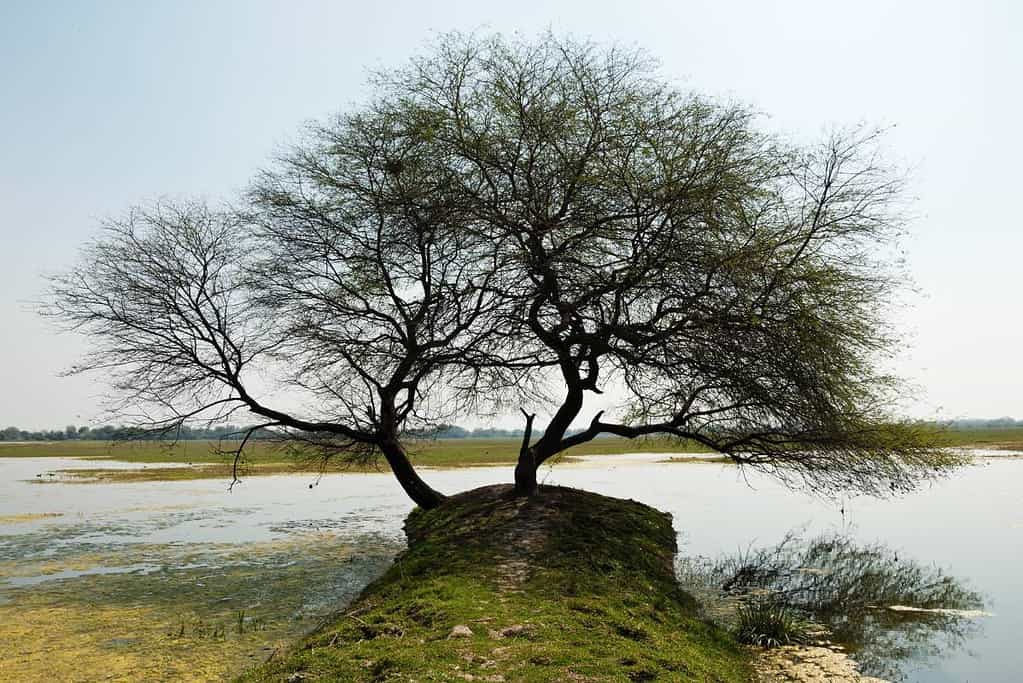
Keoladeo National Park is a UNESCO World Heritage site in the northern Indian state of Rajasthan. The park was formerly known as Bharatpur Bird Sanctuary and is home to over 360 bird species, including resident and migratory birds. The park was established in 1982 and is a man-made wetland providing crucial bird habitat, particularly during winter. The park also features other wildlife, such as sambar deer, spotted deer, and wild boar. Visitors can explore the park on foot, bicycle, or rickshaw and enjoy the peaceful natural surroundings while observing the birds and other wildlife. Keoladeo National Park is a must-visit destination for nature and bird lovers.
Manas Wildlife Sanctuary
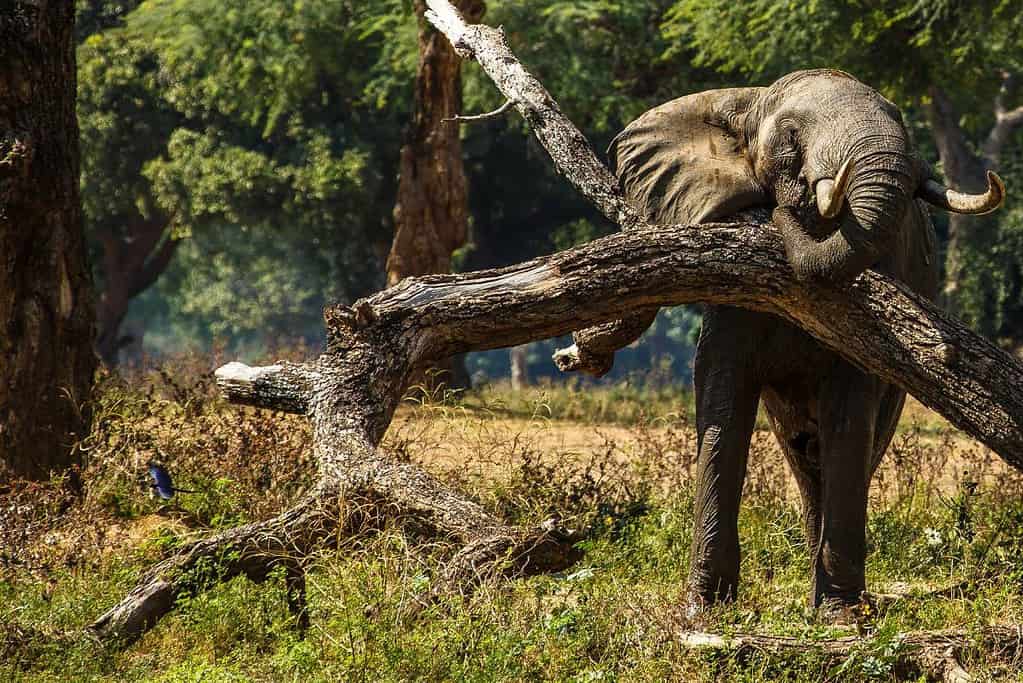
Manas Wildlife Sanctuary is a UNESCO World Heritage Site in northeastern Assam, India. The sanctuary is home to diverse wildlife, including the endangered Bengal tiger, Indian rhinoceros, and pygmy hog. The park also boasts a unique landscape that includes forests, grasslands, and wetlands, making it a haven for biodiversity. The sanctuary is also home to several indigenous communities who have lived in the area for centuries and have a deep cultural connection to the land. Manas Wildlife Sanctuary is a must-visit destination for anyone interested in wildlife conservation and the natural beauty of India.
Nanda Devi and Valley of Flowers National Parks

The Nanda Devi and Valley of Flowers National Parks are UNESCO World Heritage sites in the northern Indian state of Uttarakhand. The parks have a unique and diverse ecosystem with high-altitude meadows, glaciers, and snow-capped peaks. The area is also home to several rare and endangered species, including the Asiatic black bear and snow leopard.
The Nanda Devi National Park is named after the Nanda Devi peak, India’s second-highest mountain. The park is known for its breathtaking landscapes, including the Rishi Ganga Gorge, the Nanda Devi Sanctuary, and the Valley of Flowers.
Sundarbans National Park
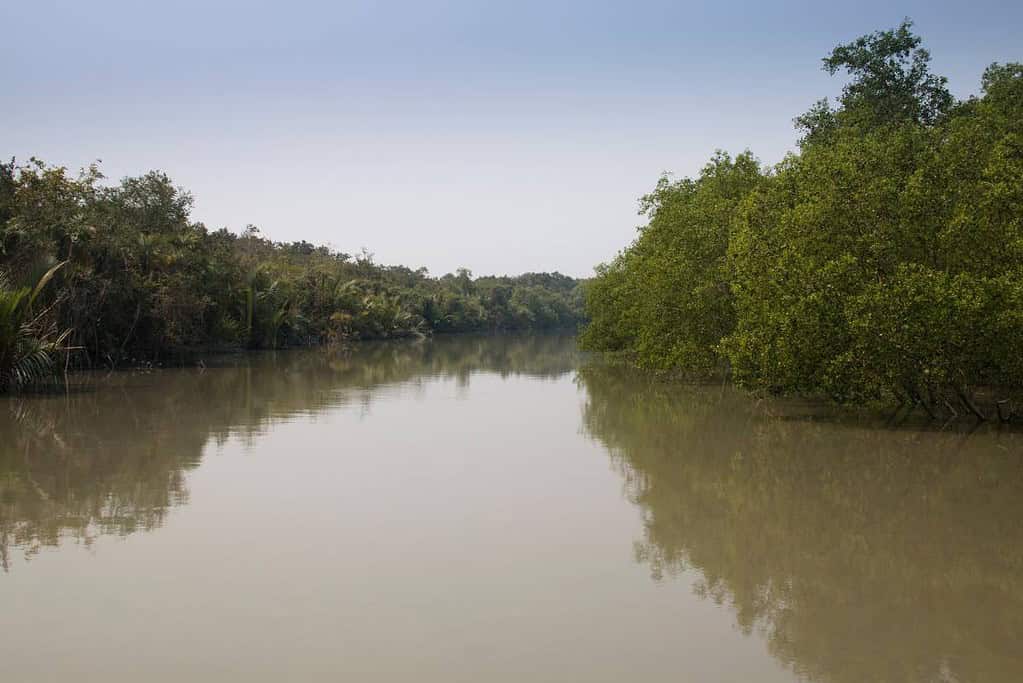
The Sundarbans National Park is a UNESCO World Heritage site located in the Indian state of West Bengal. It is the world’s largest mangrove forest and home to the Bengal tiger, saltwater crocodile, and other wildlife species. The park’s unique ecosystem is formed by the delta of the Ganges, Brahmaputra, and Meghna rivers and is characterized by a complex network of estuaries, tidal creeks, and small islands. The Sundarbans National Park is also an important center for ecological and environmental research, and it serves as a critical habitat for many endangered species. Visitors can take boat tours through the mangrove forest to experience its natural beauty and wildlife.
Western Ghats
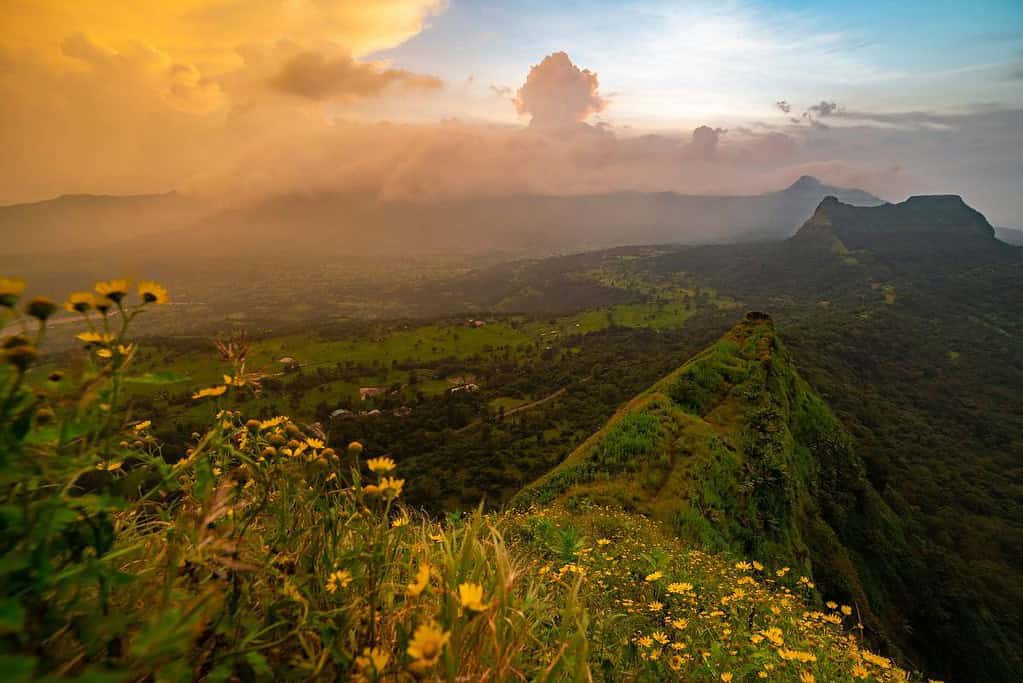
The Western Ghats is a UNESCO World Heritage Site located in southwestern India. This mountain range runs parallel to the western coast of the Indian peninsula and is home to several unique and diverse ecosystems, including rainforests, grasslands, and wetlands. The Western Ghats is home to many endemic species of plants and animals, including the lion-tailed macaque, Nilgiri langur, and Nilgiri tahr. The site is also home to several important pilgrimage centers and ancient hill forts. The Western Ghats is a must-visit destination for anyone interested in India’s natural beauty and cultural heritage.
Khangchendzonga National Park
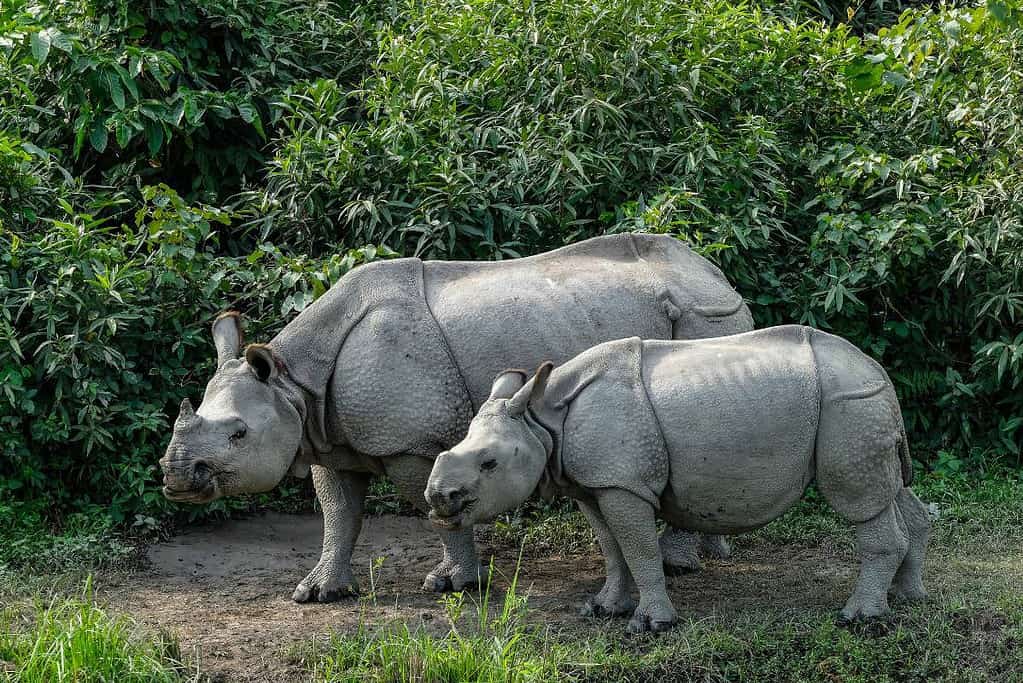
Khangchendzonga National Park is a UNESCO World Heritage Site located in the Indian state of Sikkim. It is home to the third highest mountain in the world, Mount Khangchendzonga, and a diverse range of flora and fauna, including endangered species like the snow leopard and the Himalayan black bear. The park is known for its stunning alpine landscapes, glaciers, high altitude lakes, and waterfalls, as well as its rich cultural heritage of indigenous communities like the Lepchas and the Bhutias. Visitors to the park can enjoy trekking, mountaineering, birdwatching, and exploring the traditional villages and monasteries that dot the area. Khangchendzonga National Park is a must-visit destination for anyone interested in natural beauty, adventure, and culture.
India UNESCO tentative list
- Temples at Bishnupur, West Bengal
- Mattanchery Palace, Ernakulam, Kerala
- Group of Monuments at Mandu, Madhya Pradesh
- Ancient Buddhist Site, Sarnath, Varanasi, Uttar Pradesh
- Sri Harimandir Sahib, Amritsar, Punjab
- River Island of Majuli in midstream of Brahmaputra River in Assam
- Namdapha National Park
- Wild Ass Sanctuary, Little Rann of Kutch
- Neora Valley National Park
- Desert National Park
- Silk Road Sites in India
- Santiniketan
- The Qutb Shahi Monuments of Hyderabad Golconda Fort, Qutb Shahi Tombs, Charminar
- Mughal Gardens in Kashmir
- Delhi – A Heritage City
- Monuments and Forts of the Deccan Sultanate
- Cellular Jail, Andaman Islands
- Iconic Saree Weaving Clusters of India
- Apatani Cultural Landscape
- Sri Ranganathaswamy Temple, Srirangam
- Monuments of Srirangapatna Island Town
- Chilika Lake
- Padmanabhapuram Palace
- Sacred Ensembles of the Hoysala
- Sites of Saytagrah, India’s non-violent freedom movement
- Thembang Fortified Village
- Narcondam Island
- Moidams – the Mound-Burial system of the Ahom Dynasty
- Ekamra Kshetra – The Temple City, Bhubaneswar
- The Neolithic Settlement of Burzahom
- Archaeological remains of a Harappa Port-Town, Lothal
- Mountain Railways of India (Extension)
- Chettinad, Village Clusters of the Tamil Merchants
- Bahá’í House of Worship at New Delhi
- Evolution of Temple Architecture – Aihole-Badami- Pattadakal
- Cold Desert Cultural Landscape of India
- Sites along the Uttarapath, Badshahi Sadak, Sadak-e-Azam, Grand Trunk Road
- Keibul Lamjao Conservation Area
- Garo Hills Conservation Area (GHCA)
- The historic ensemble of Orchha
- Iconic Riverfront of the Historic City of Varanasi
- Temples of Kanchipuram
- Hire Benkal, Megalithic Site
- Bhedaghat-Lametaghat in Narmada Valley
- Satpura Tiger Reserve
- Serial Nomination of Maratha Military Architecture in Maharashtra
- Geoglyphs of Konkan Region of India
- Jingkieng jri: Living Root Bridge Cultural Landscapes
- Sri Veerabhadra Temple and Monolithic Bull (Nandi), Lepakshi (The Vijayanagara Sculpture and Painting Art Tradition)
- Sun Temple, Modhera and its adjoining monuments
- Rock-cut Sculptures and Reliefs of the Unakoti, Unakoti Range, Unakoti District
- Vadnagar – A multi-layered Historic town, Gujarat
Tours in India
Our choices of tours in India are divided into thematic features such as The Taj Mahal, Kerala, and the Jaipur Experience.
